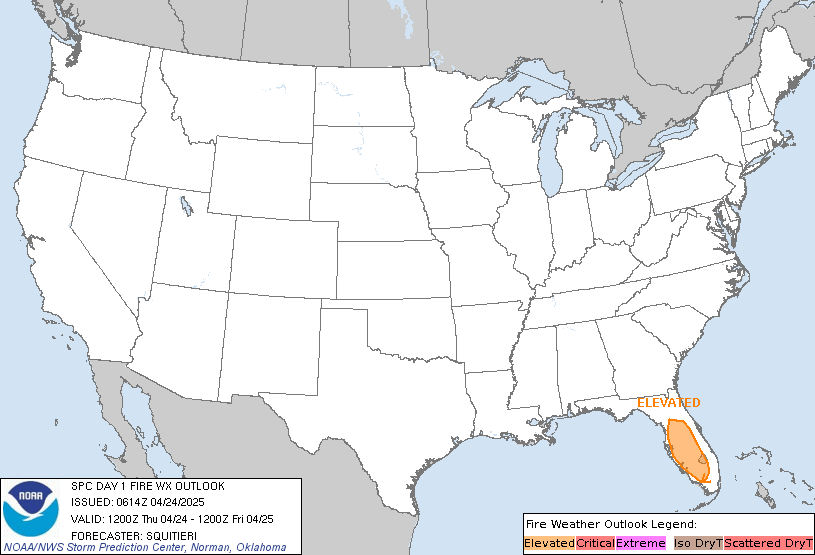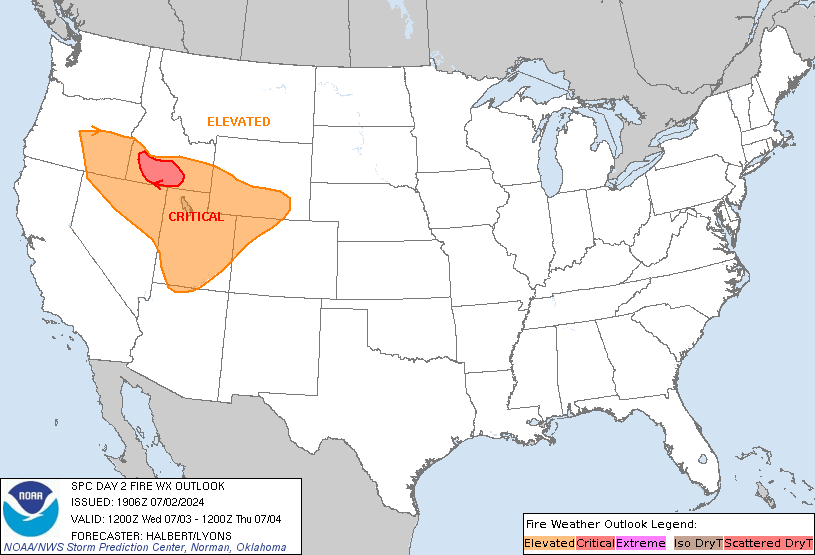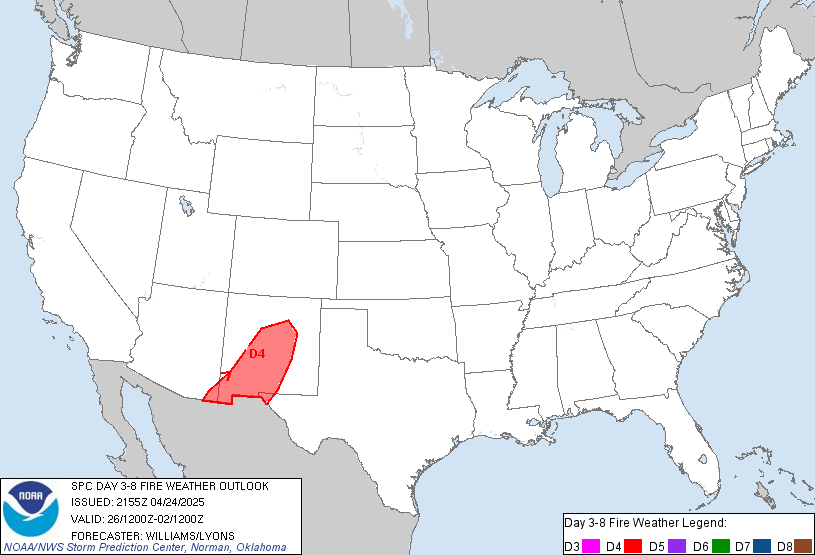|
| Spots and SPC Fire Outlooks |
|
|
|
| Day 1 |
Day 2 |
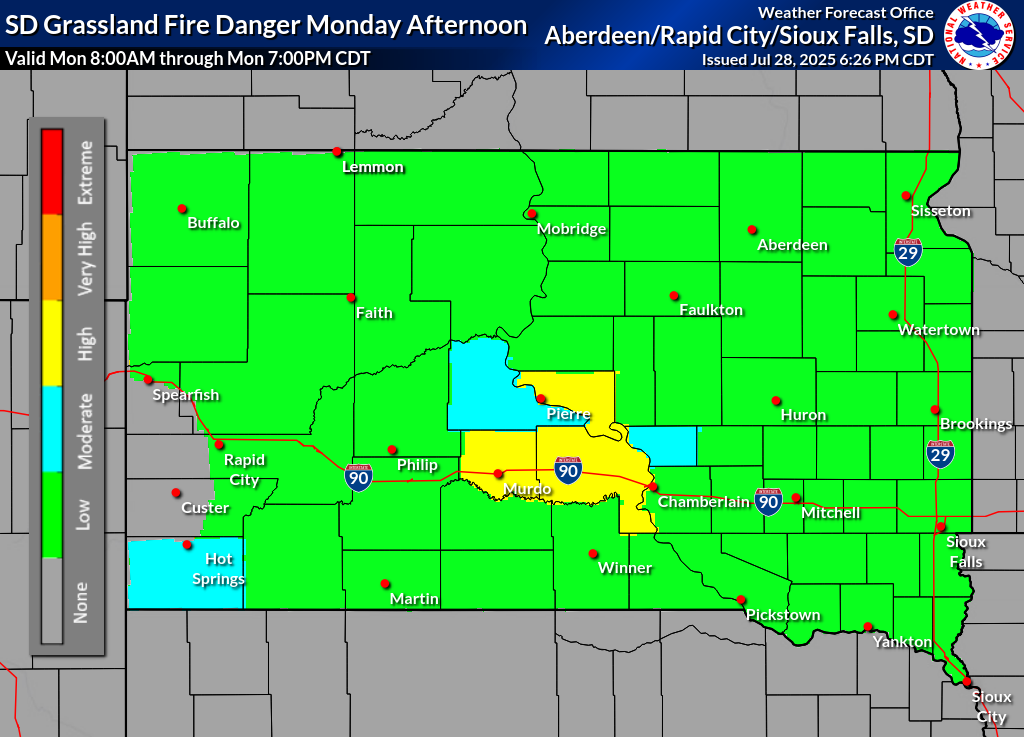 |
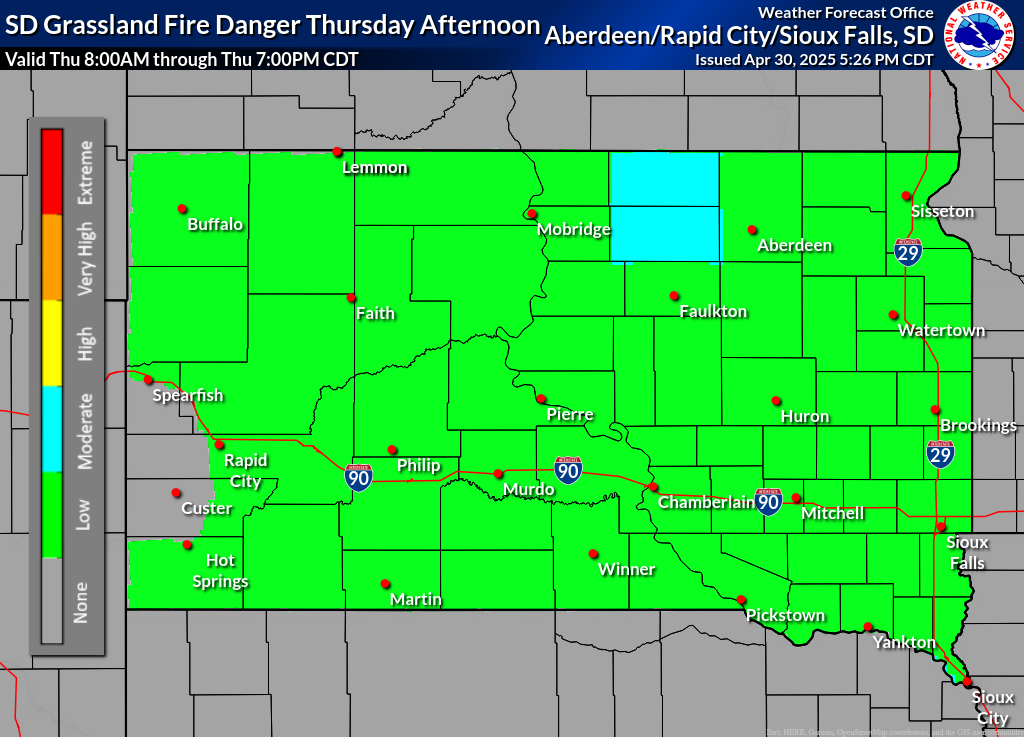 |
| Day 1 |
Day 2 |
Day 3 |
Day 4 |
Day 5 |
Day 6 |
Day 7 |
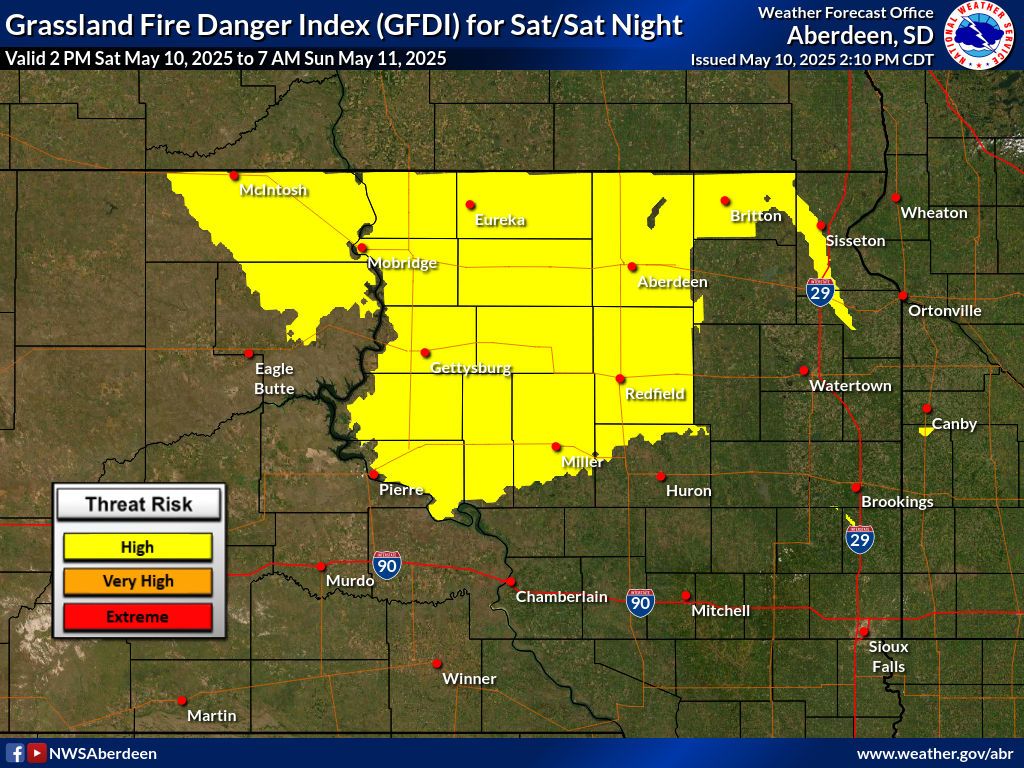 |
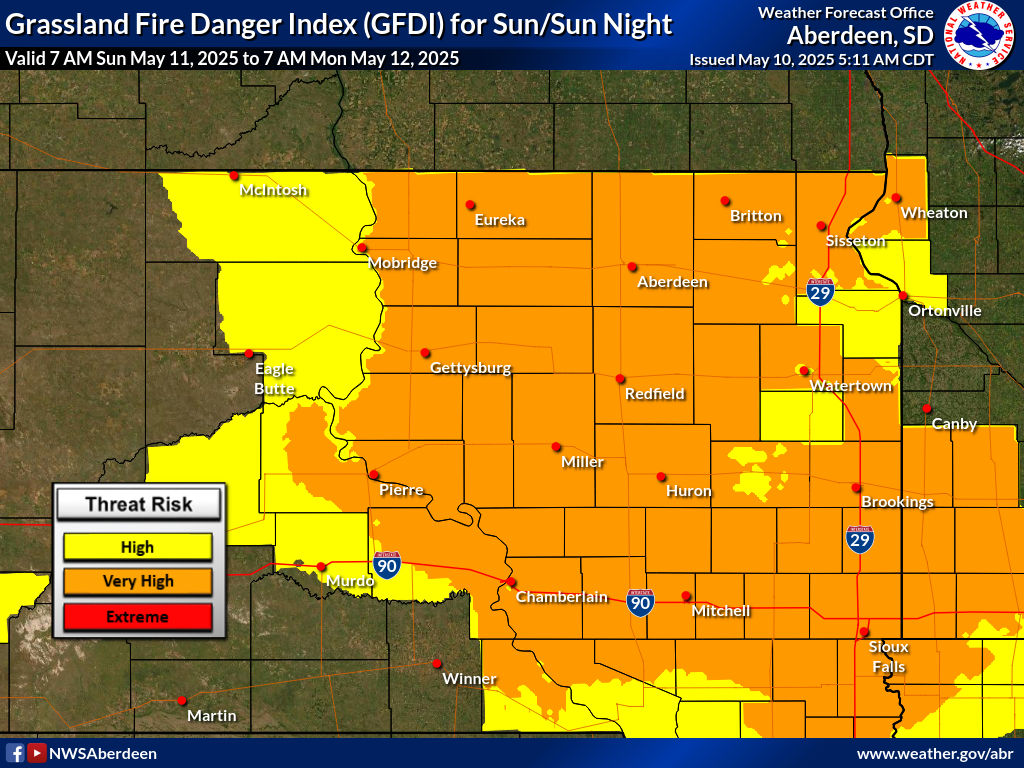 |
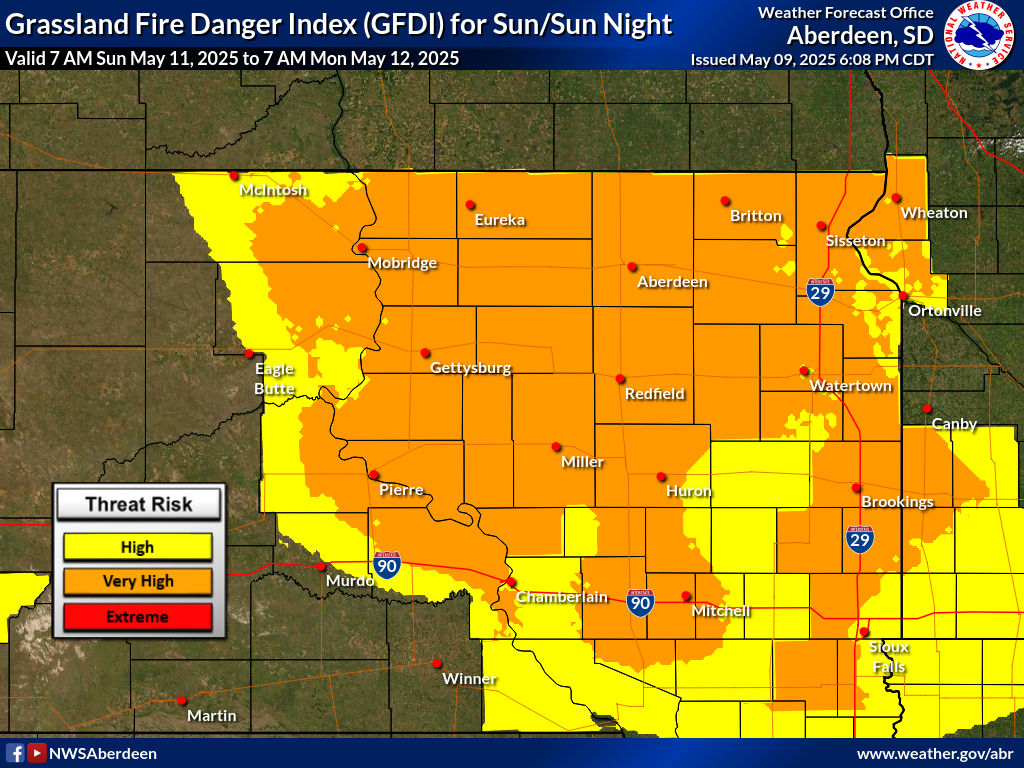 |
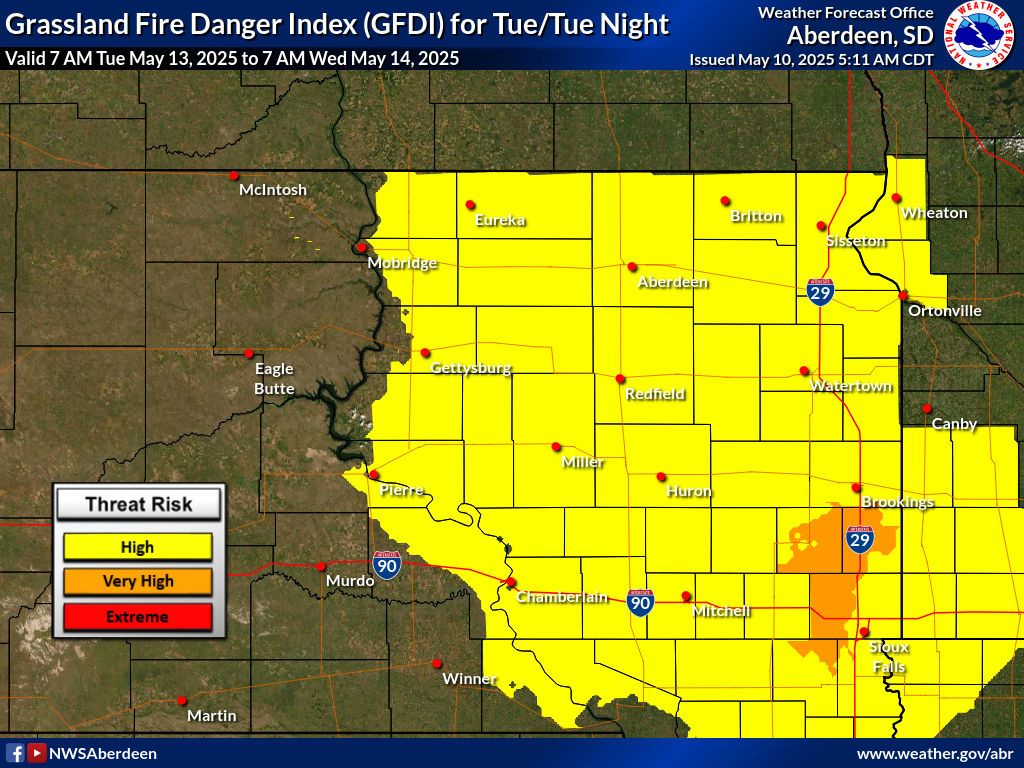 |
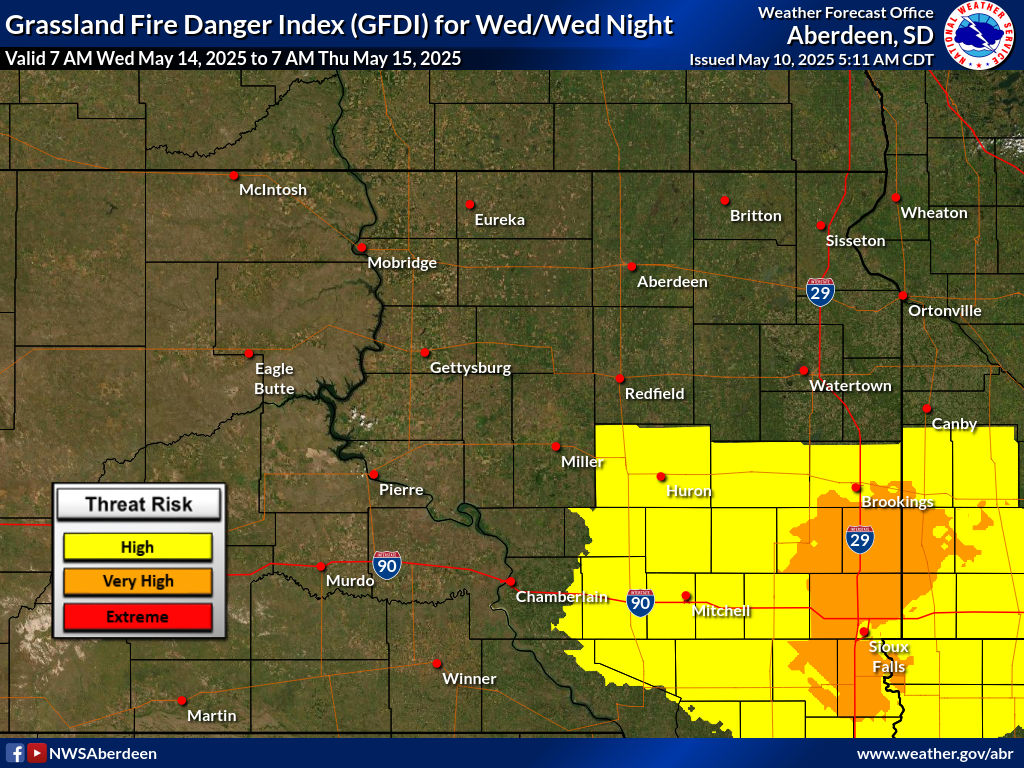 |
 |
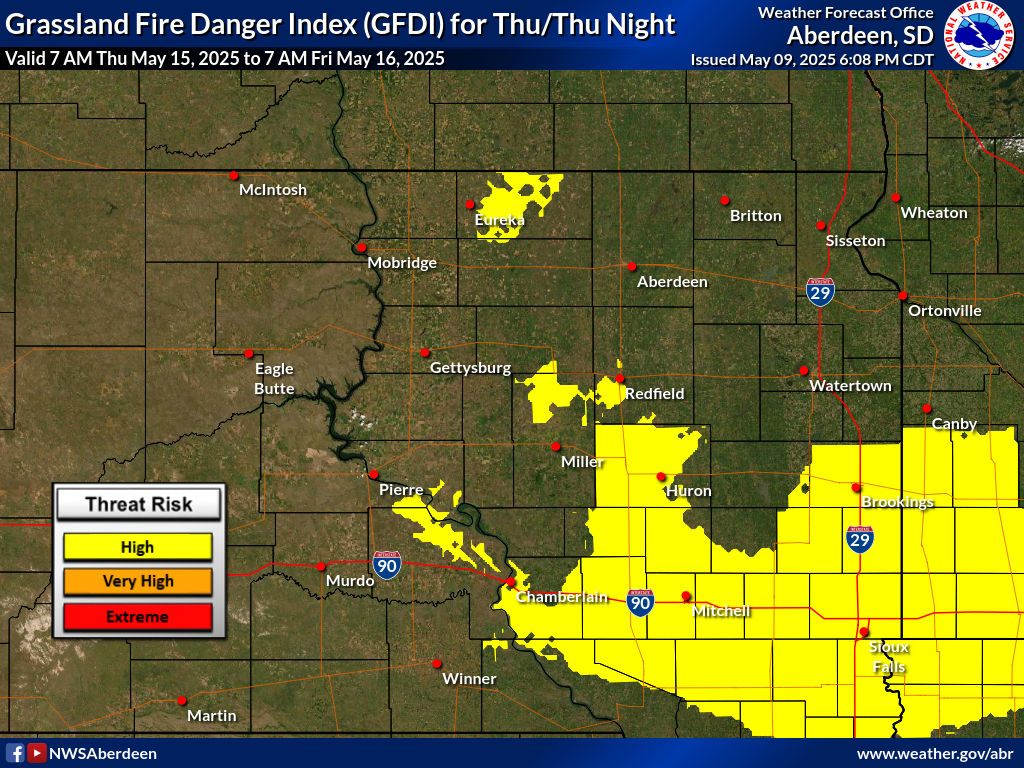 |
| Today's Median GEFS HDWI |
Today's Maximum GEFS HDWI |
 |
 |
| Mobridge |
Pierre |
Aberdeen |
Watertown |
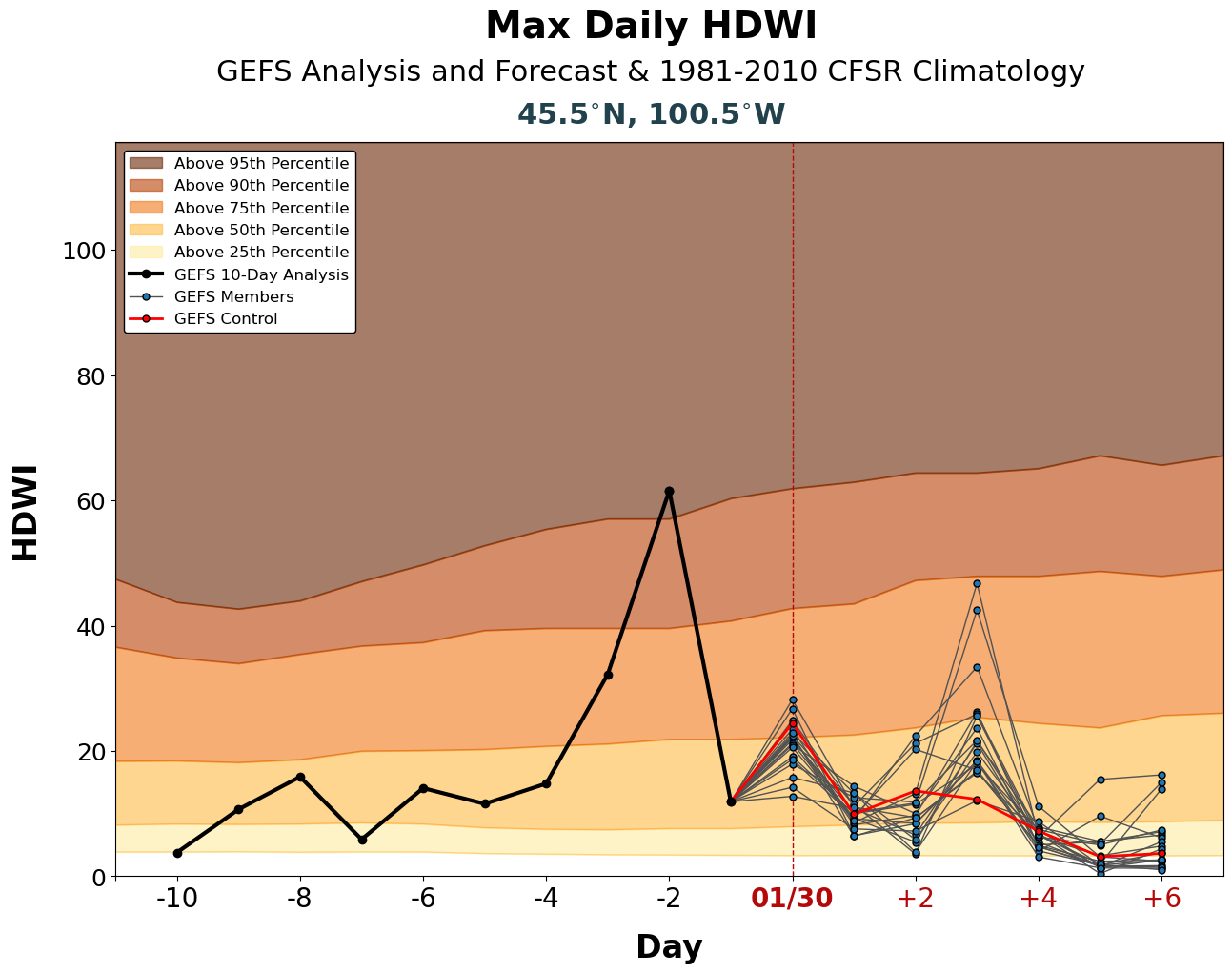 |
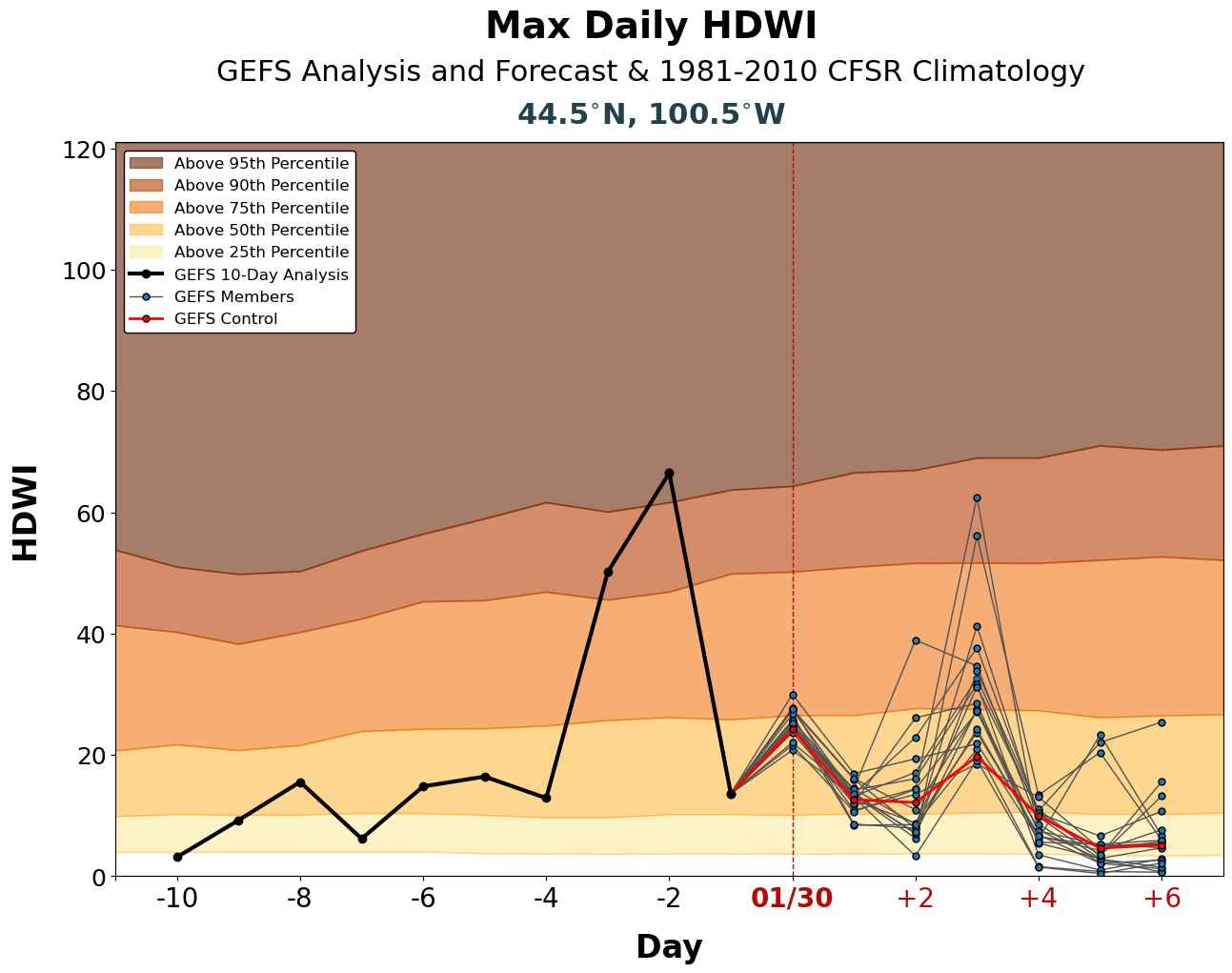 |
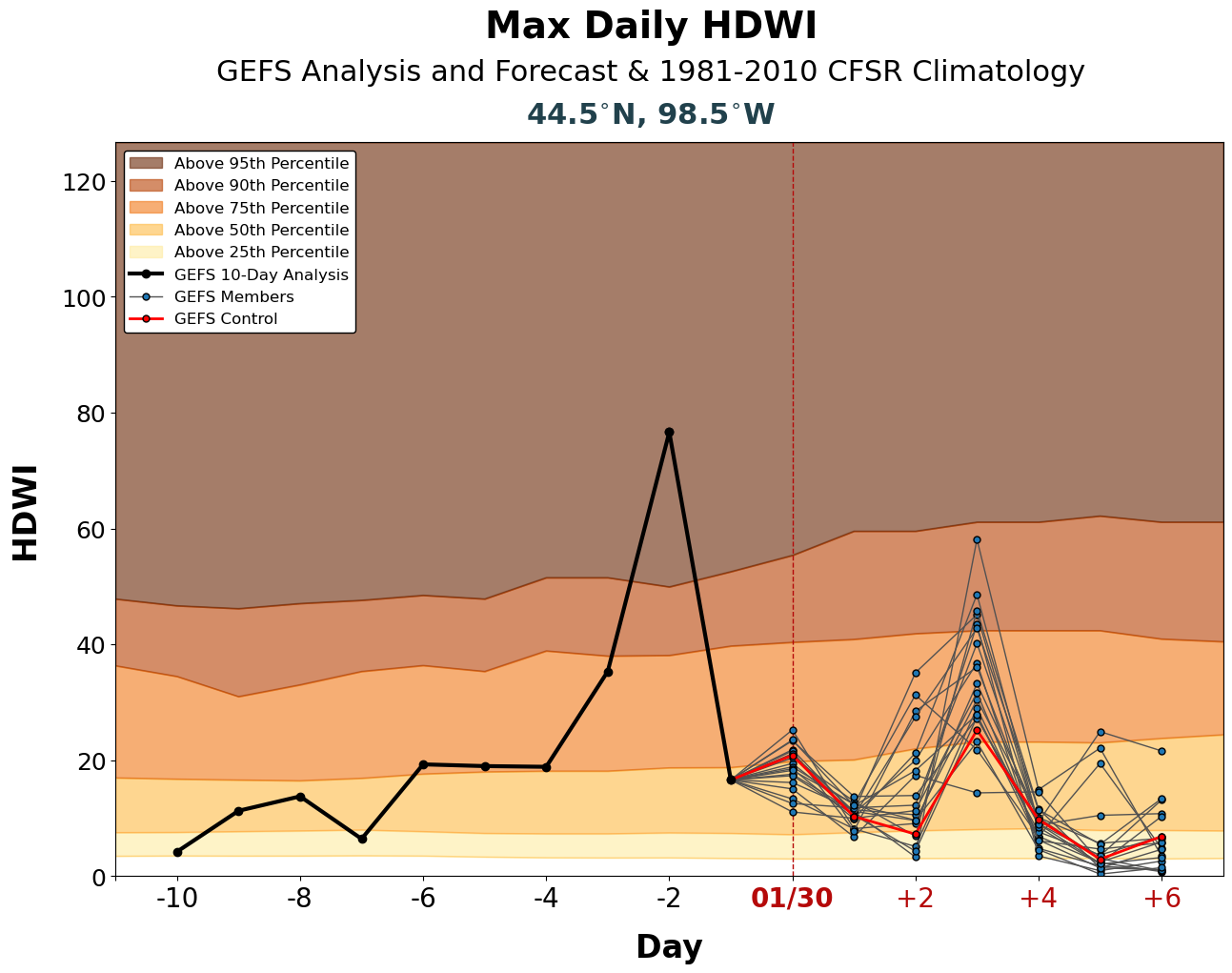 |
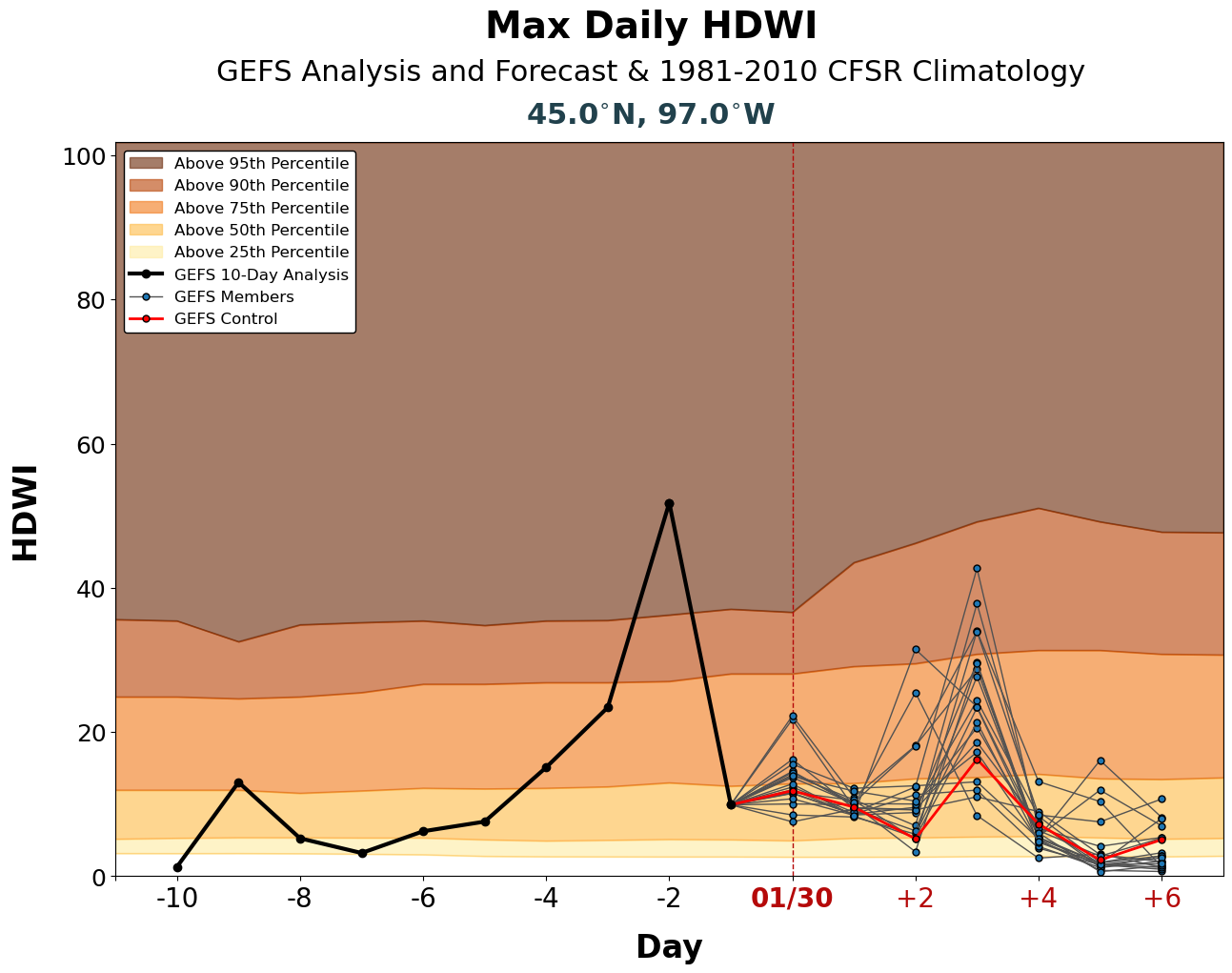 |
| Day 0 - 75th %tile |
Day 1 - 75th %tile |
Day 2 - 75th %tile |
Day 3 - 75th %tile |
Day 4 - 75th %tile |
Day 5 - 75th %tile |
Day 6 - 75th %tile |
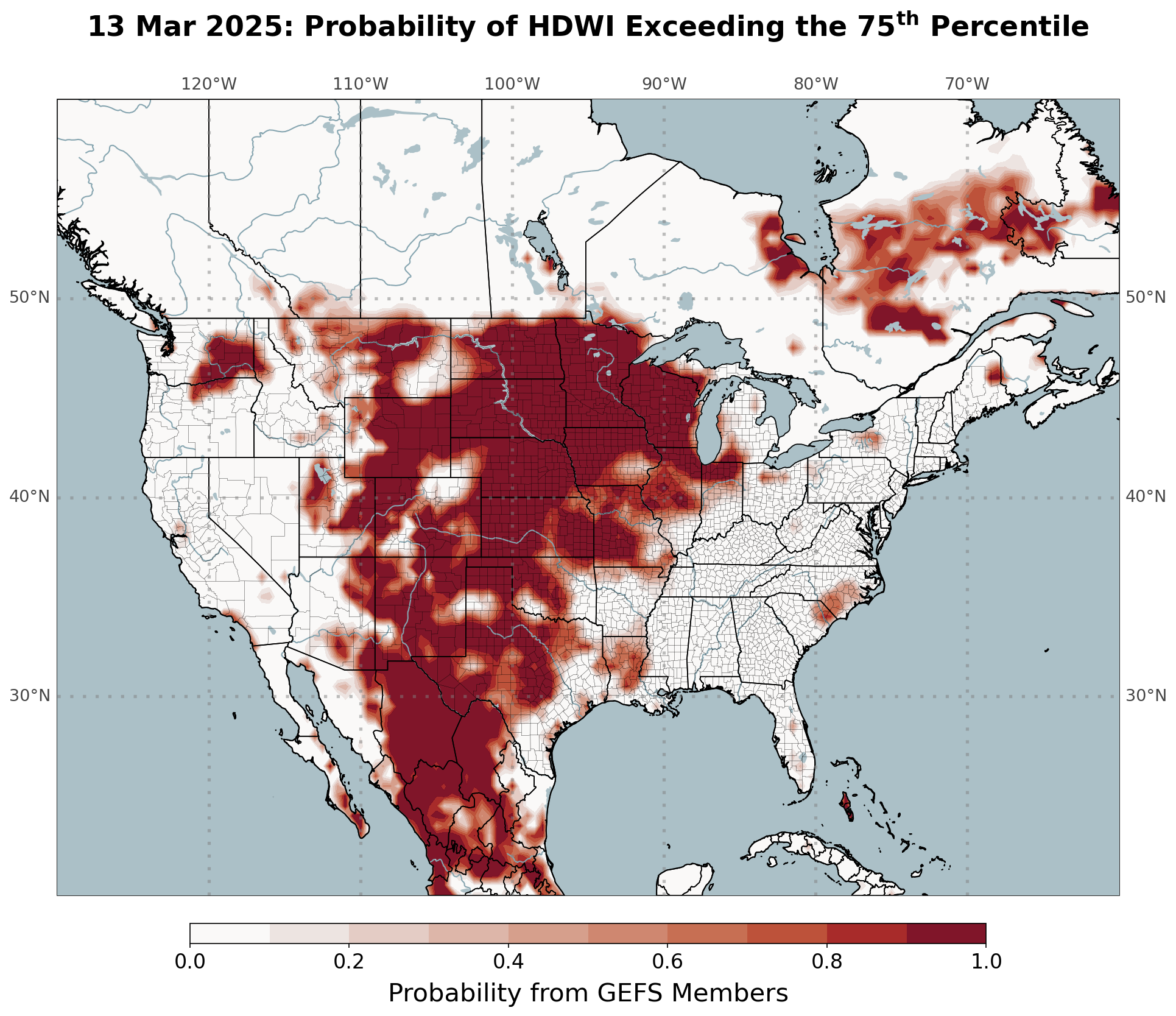 |
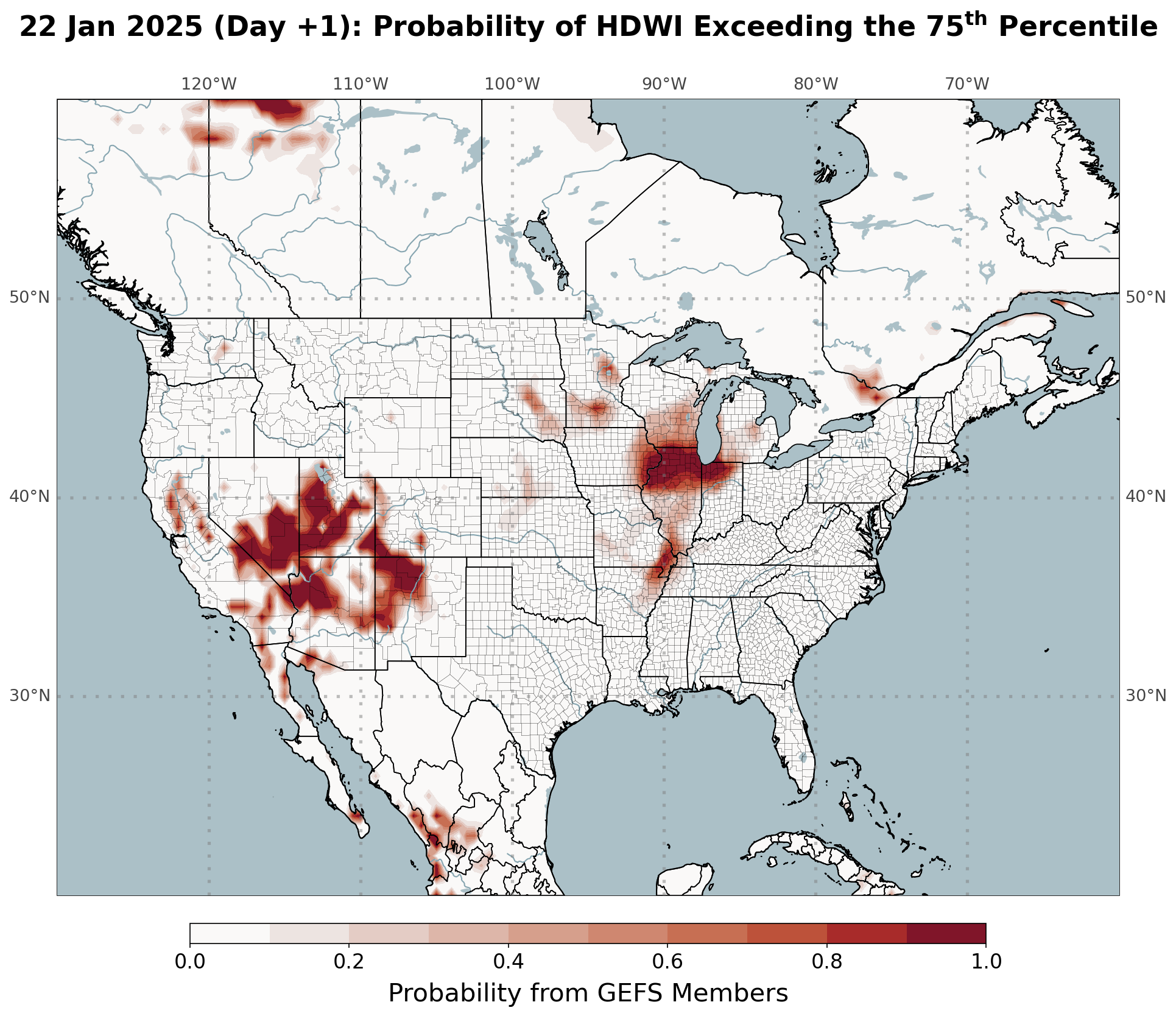 |
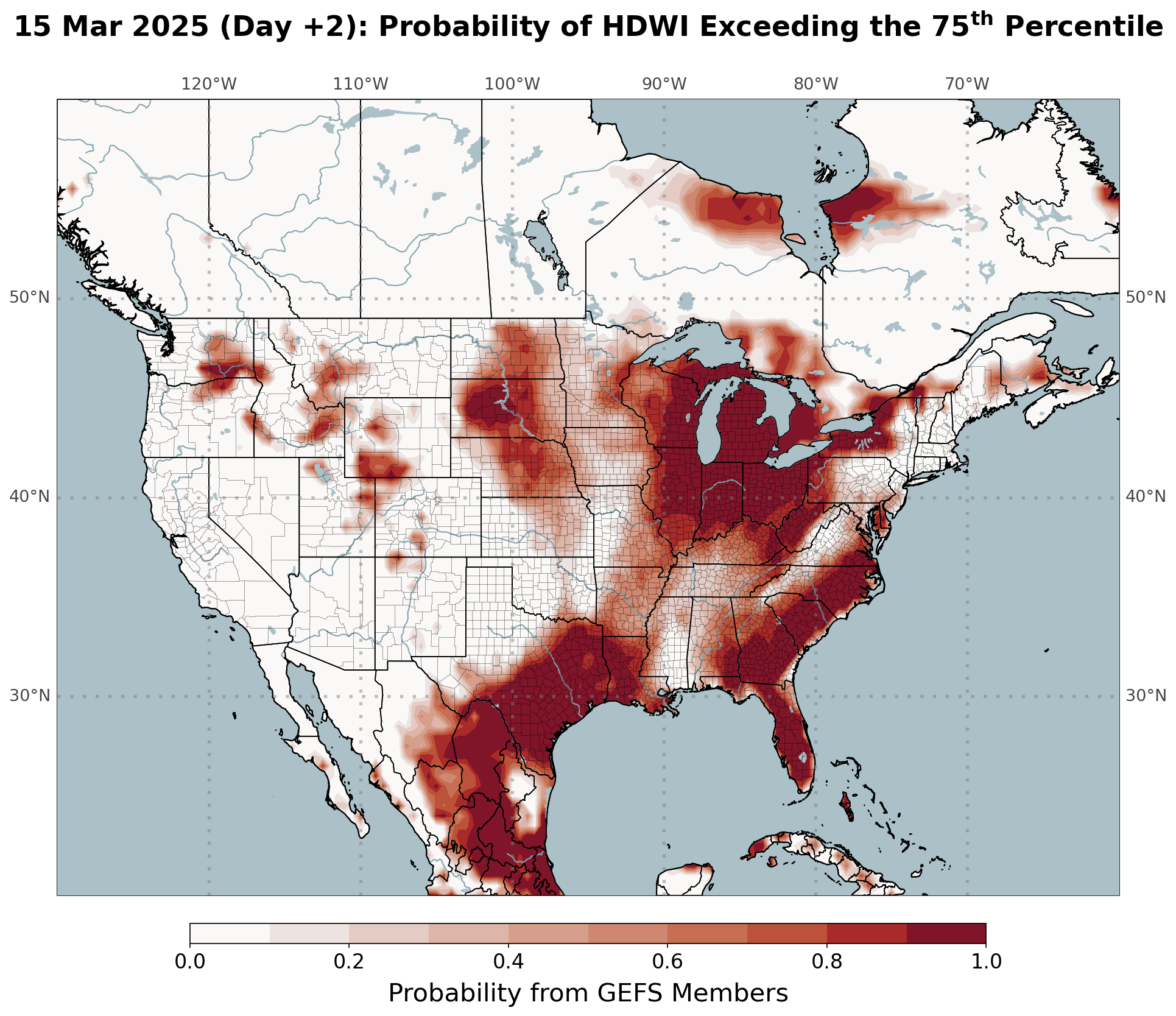 |
 |
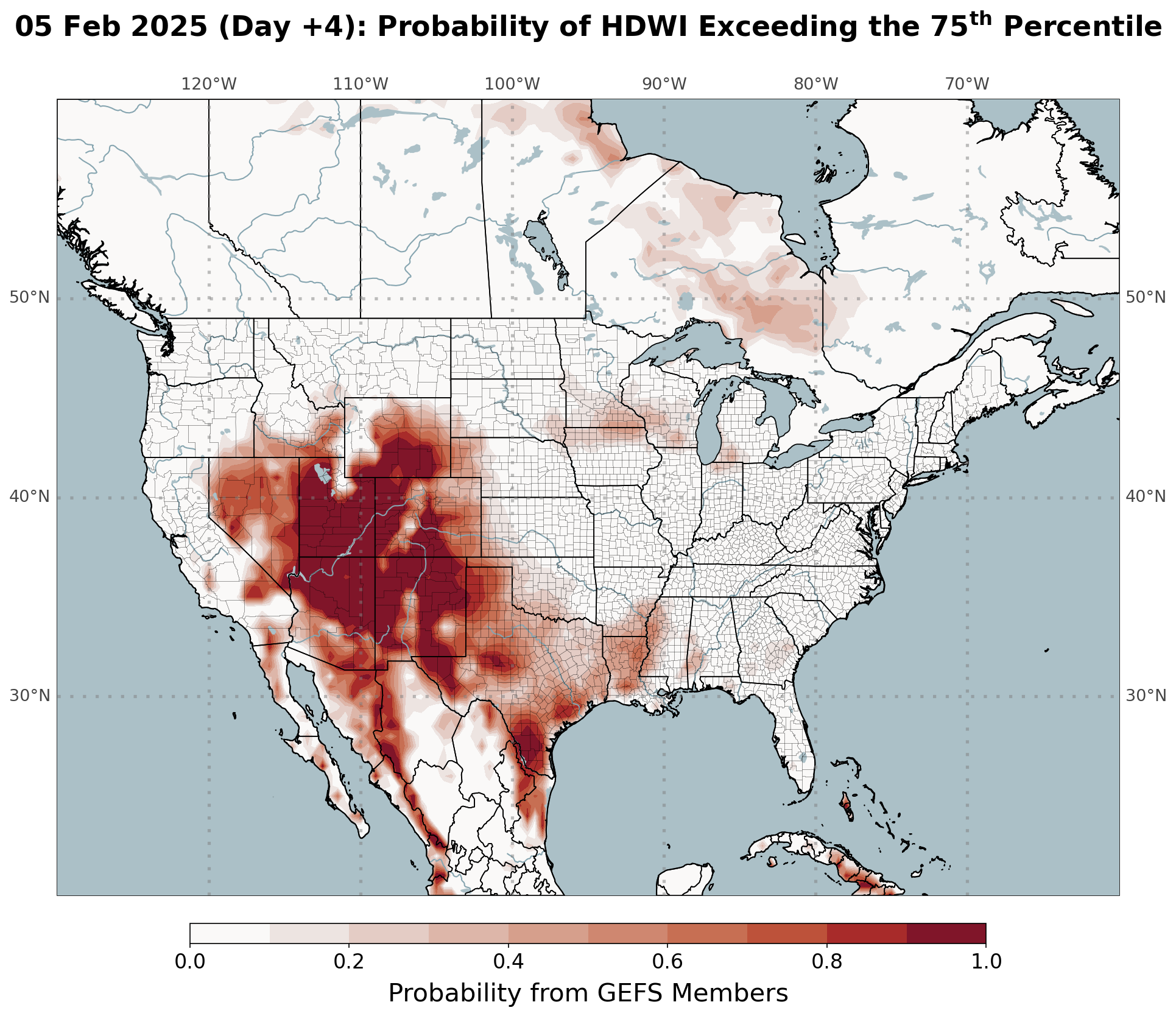 |
 |
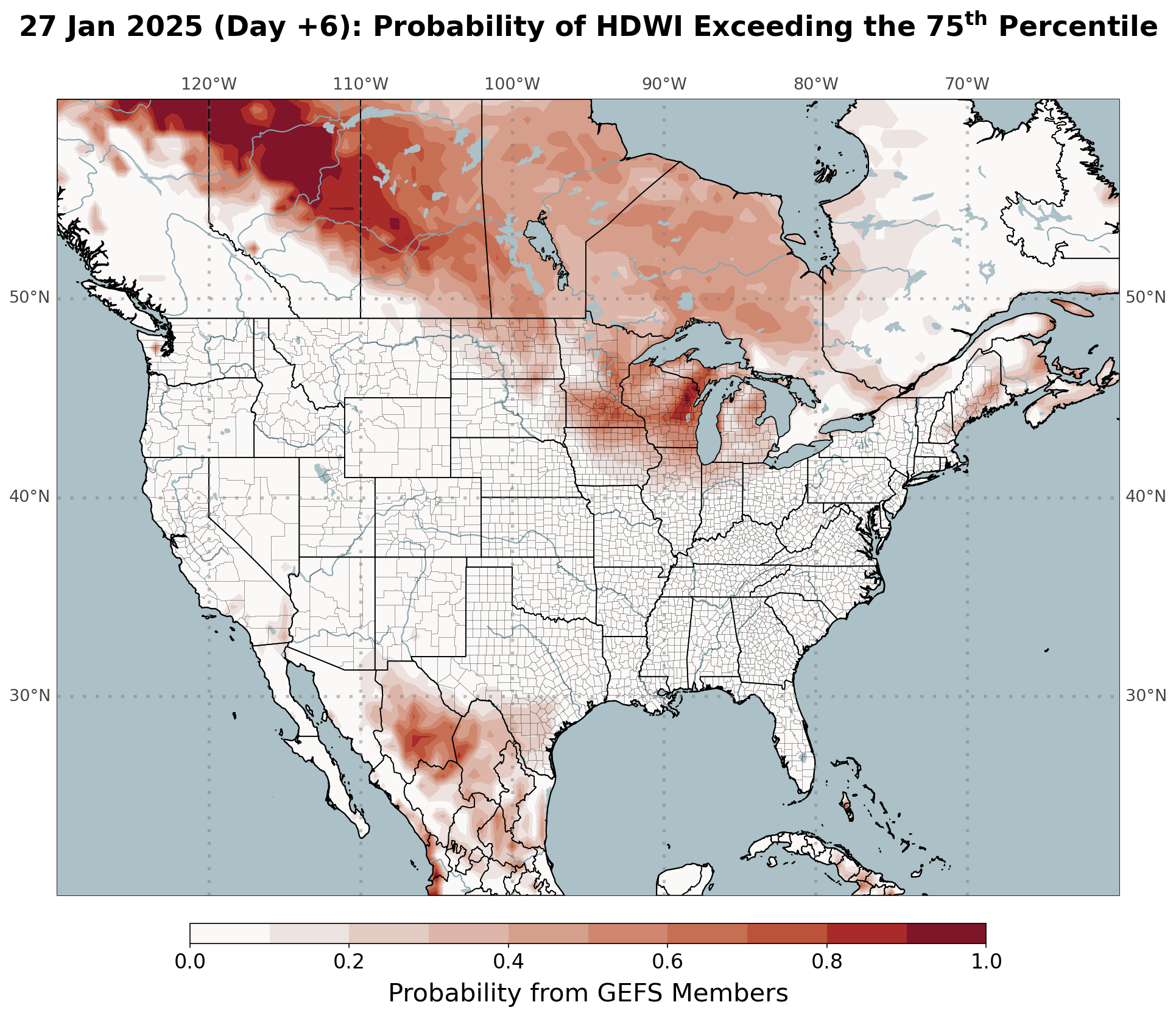 |
| Day 0 - 90th %tile |
Day 1 - 90th %tile |
Day 2 - 90th %tile |
Day 3 - 90th %tile |
Day 4 - 90th %tile |
Day 5 - 90th %tile |
Day 6 - 90th %tile |
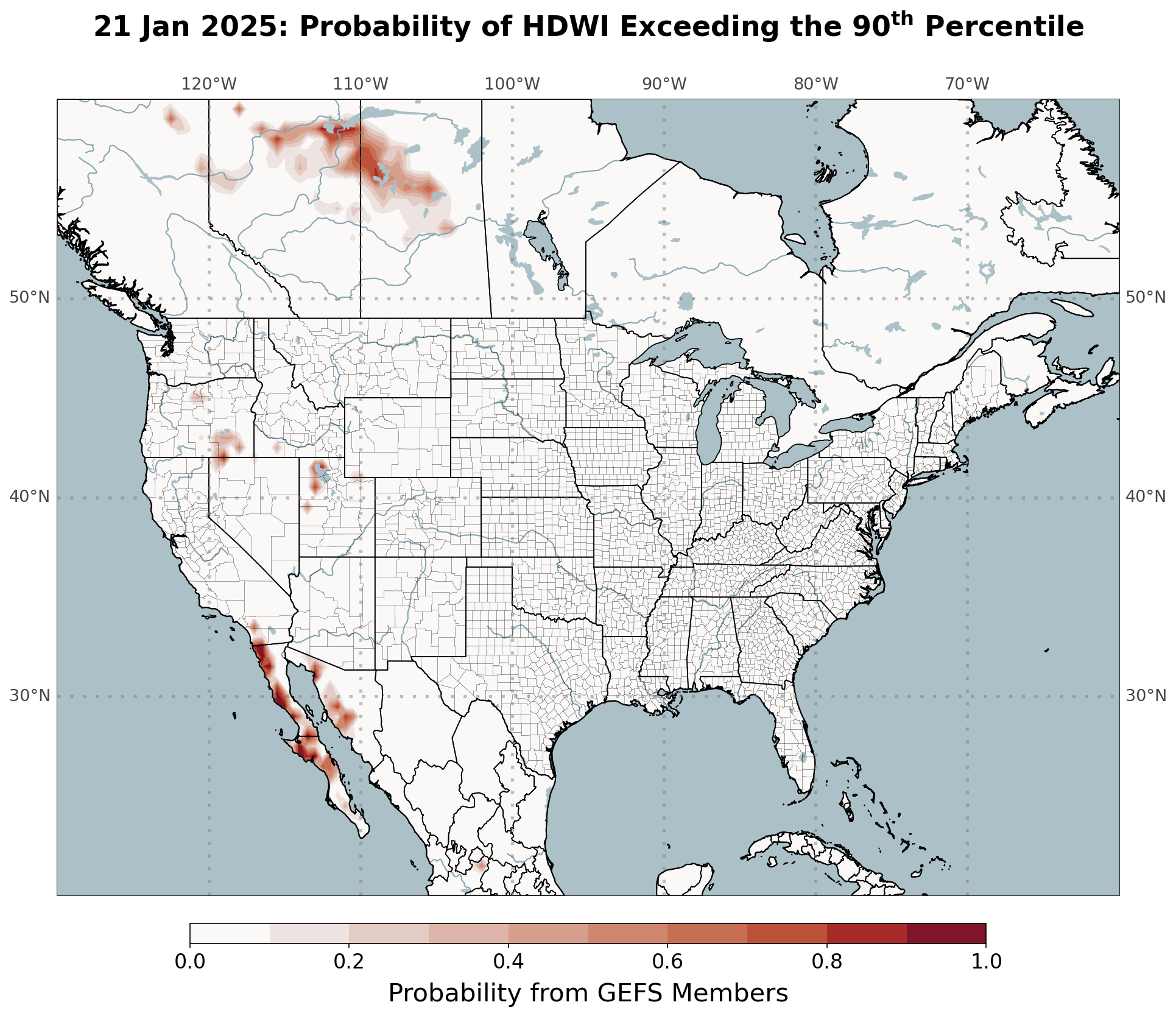 |
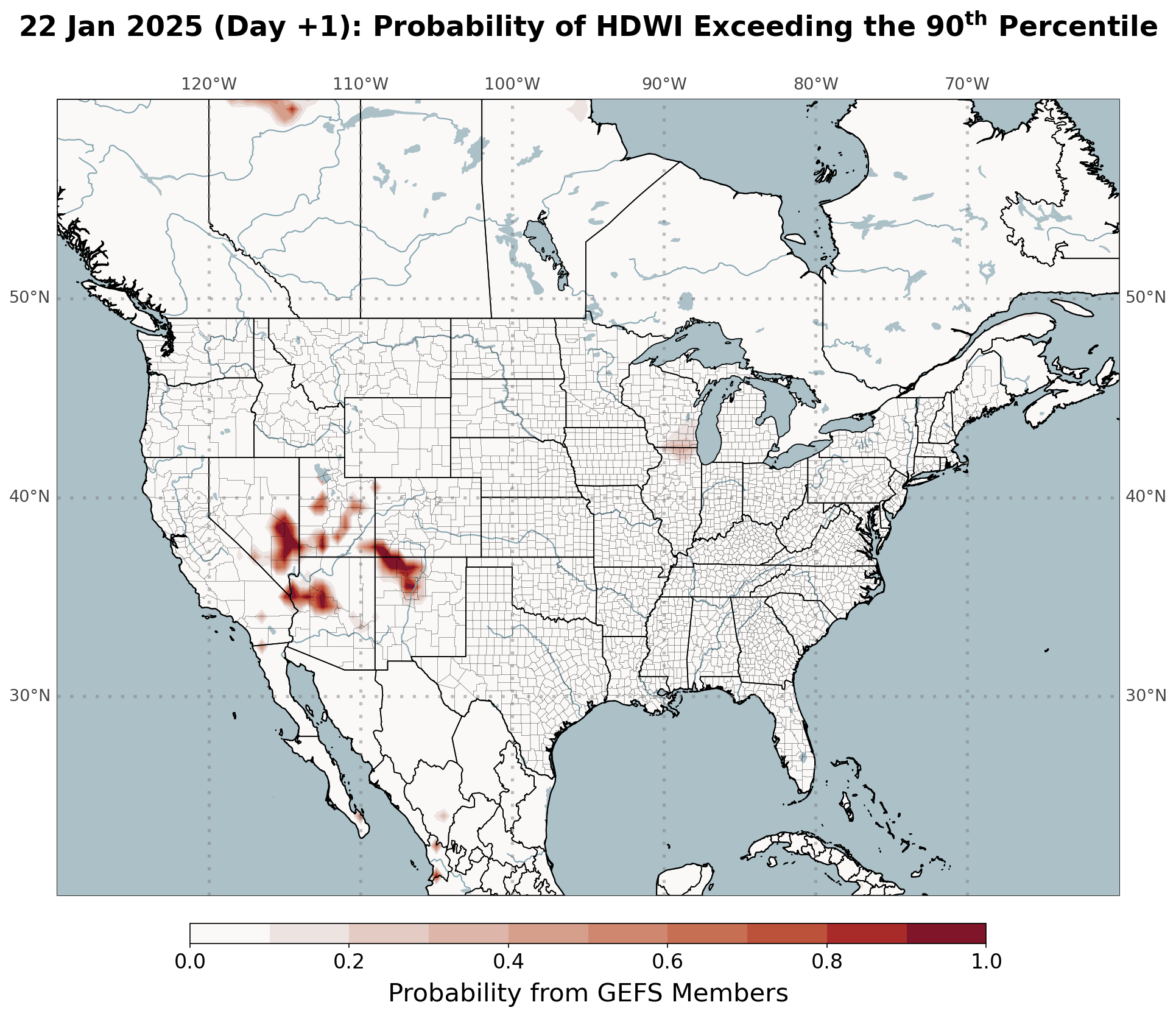 |
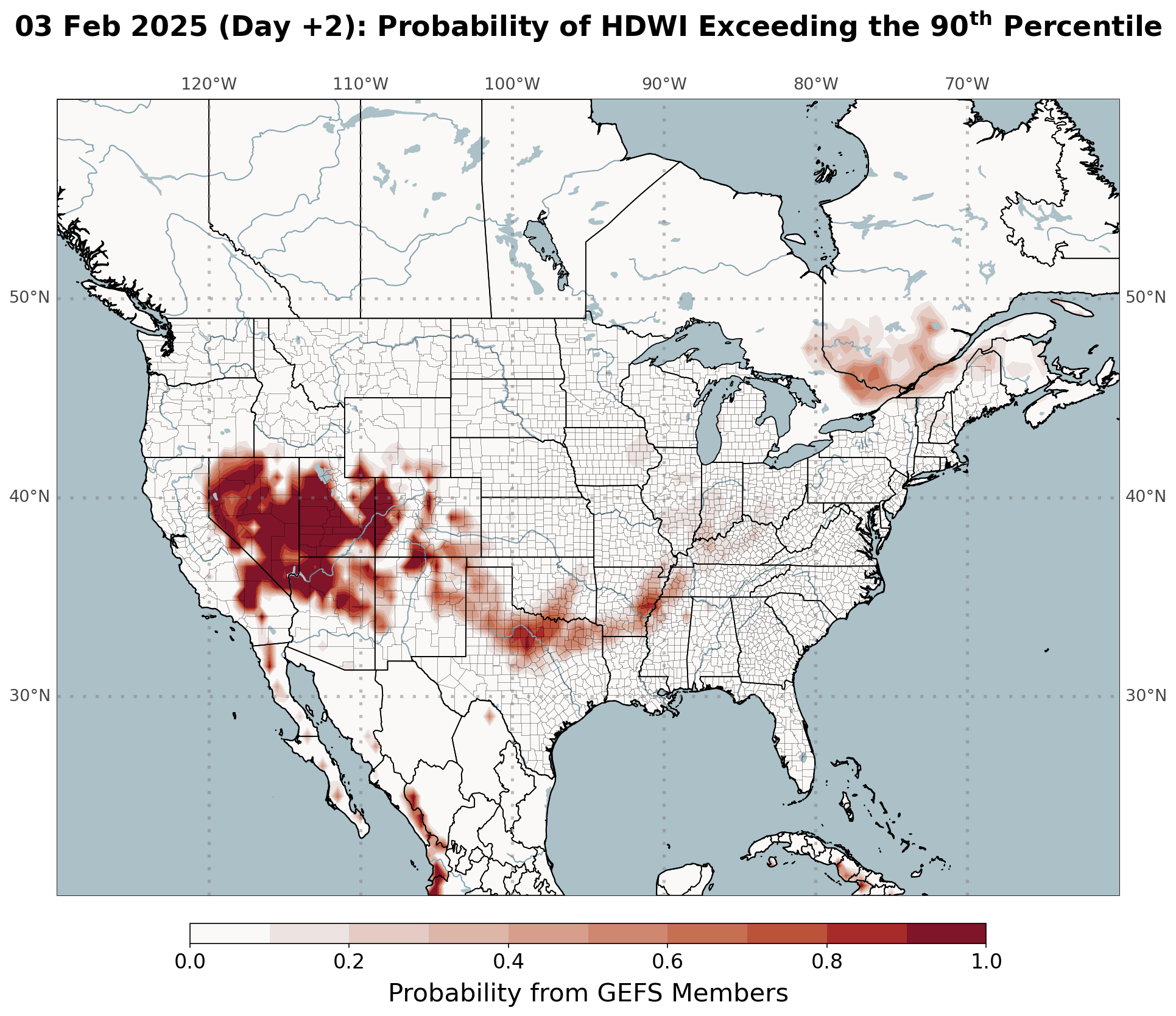 |
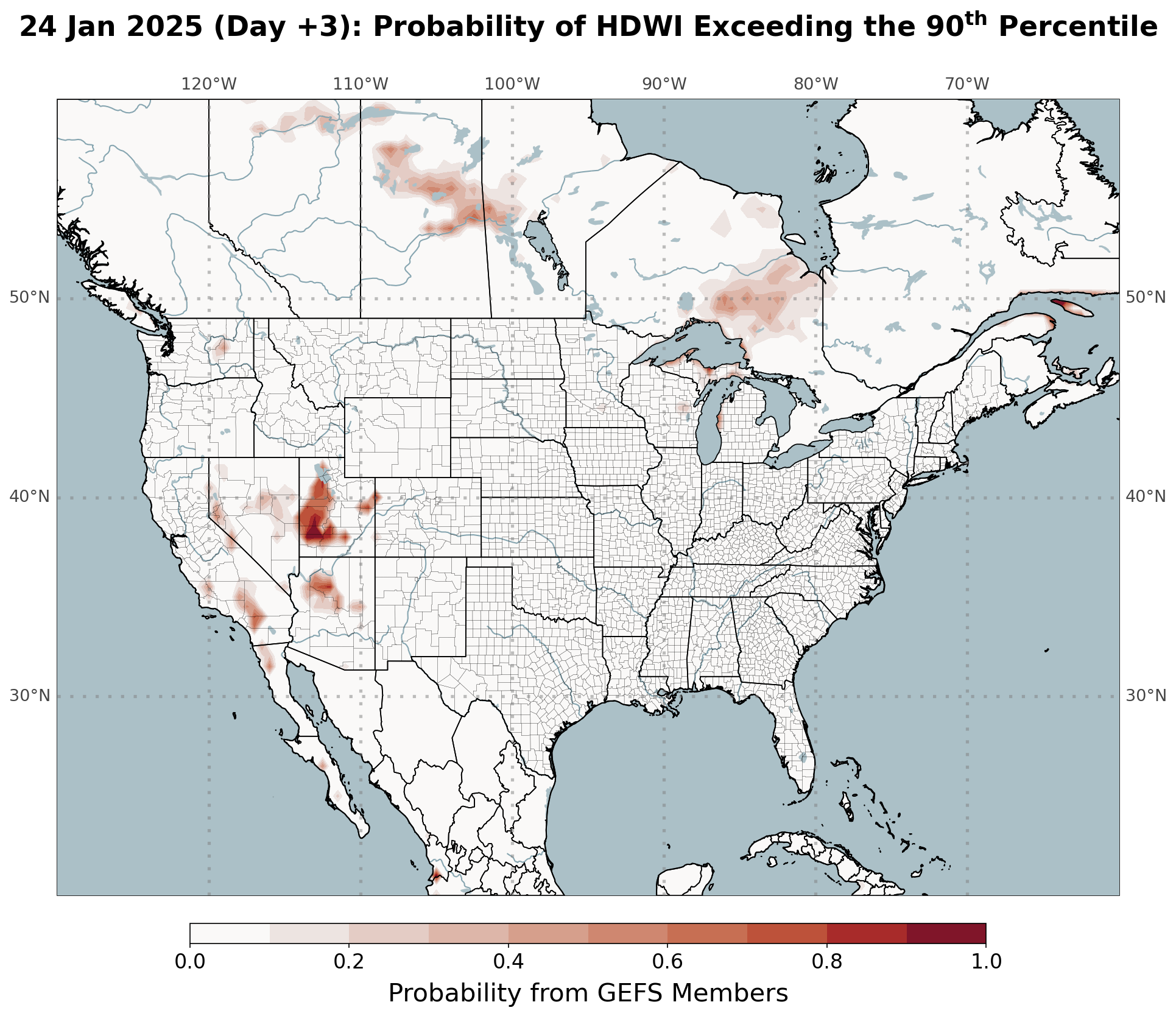 |
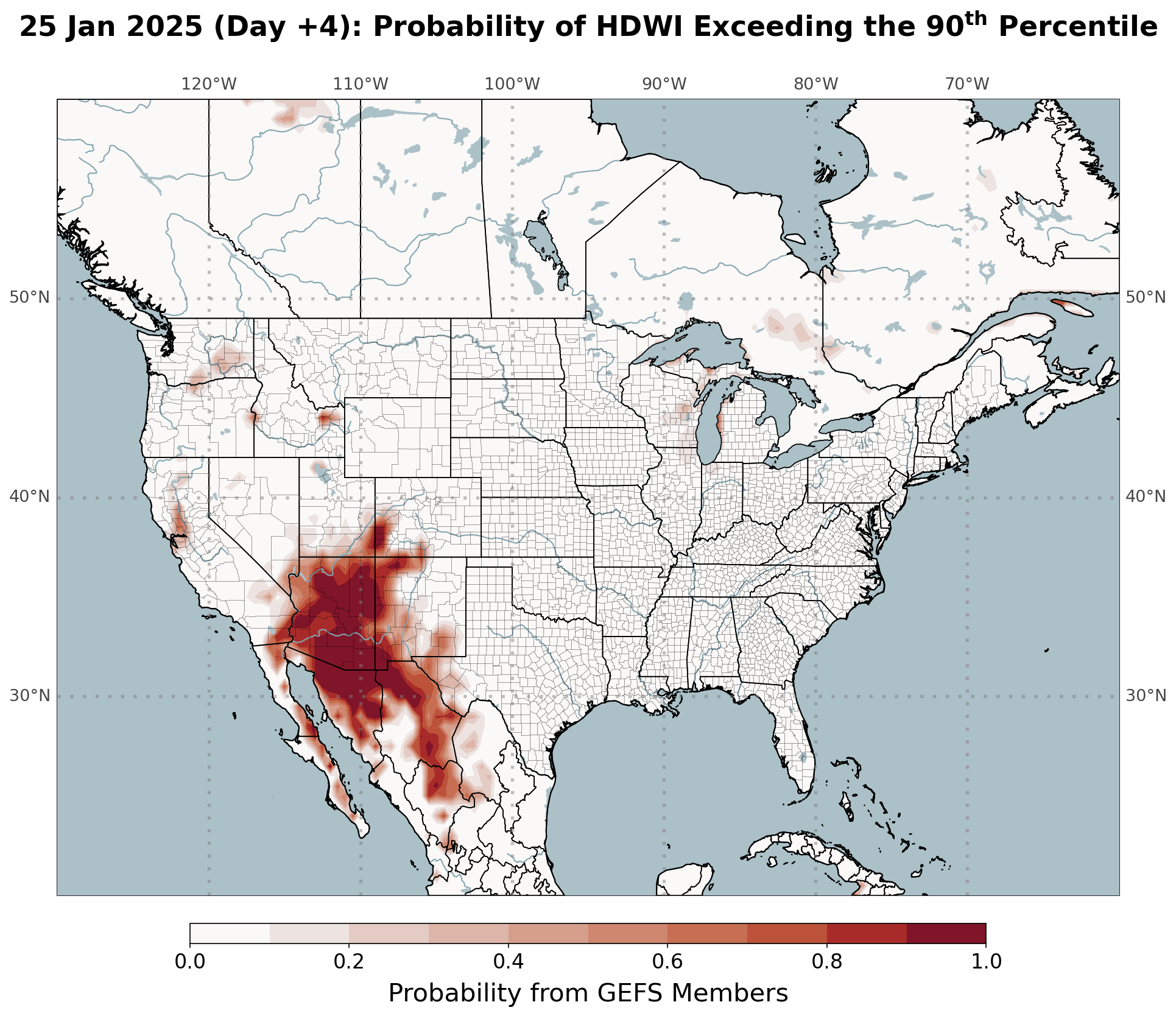 |
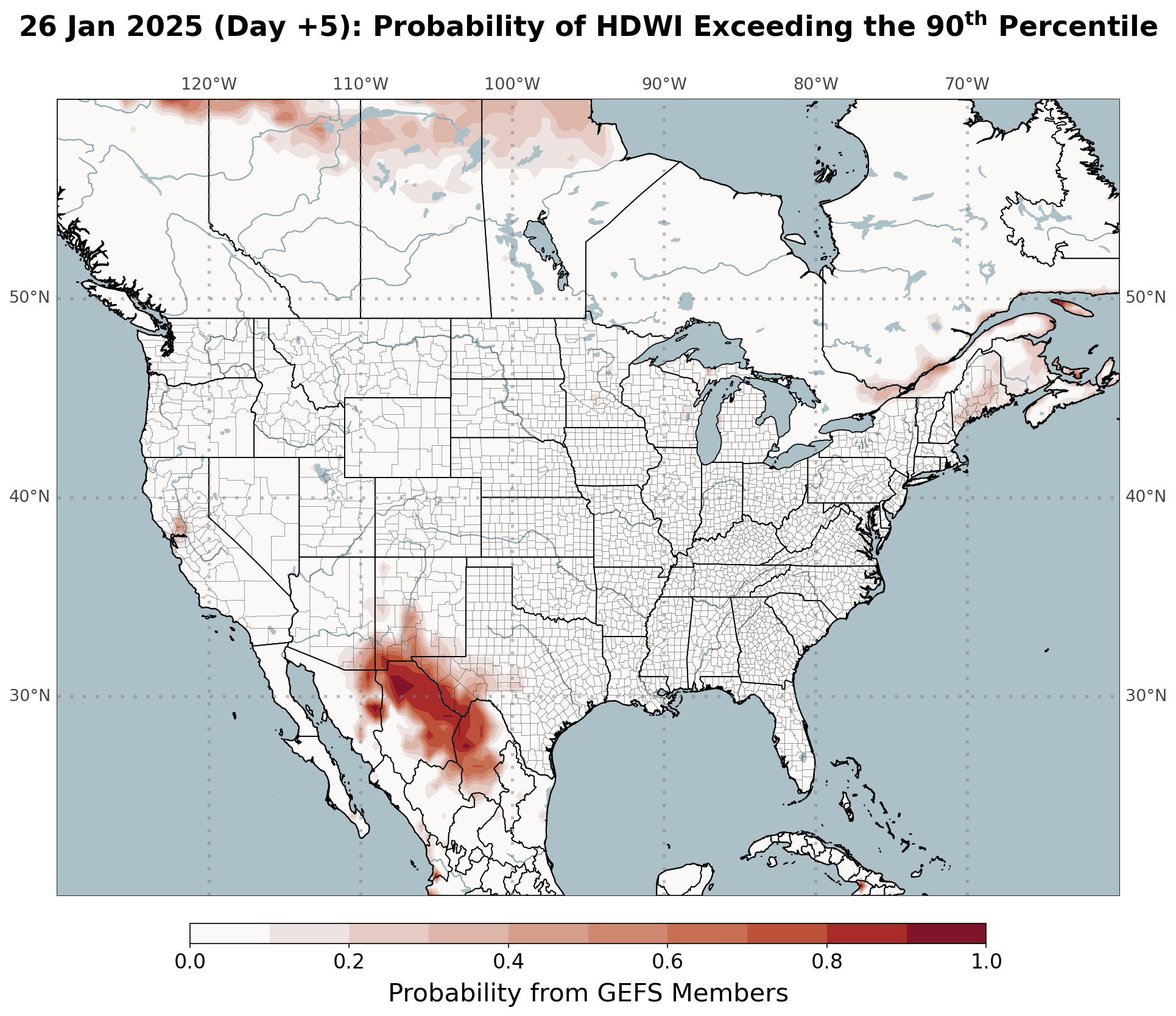 |
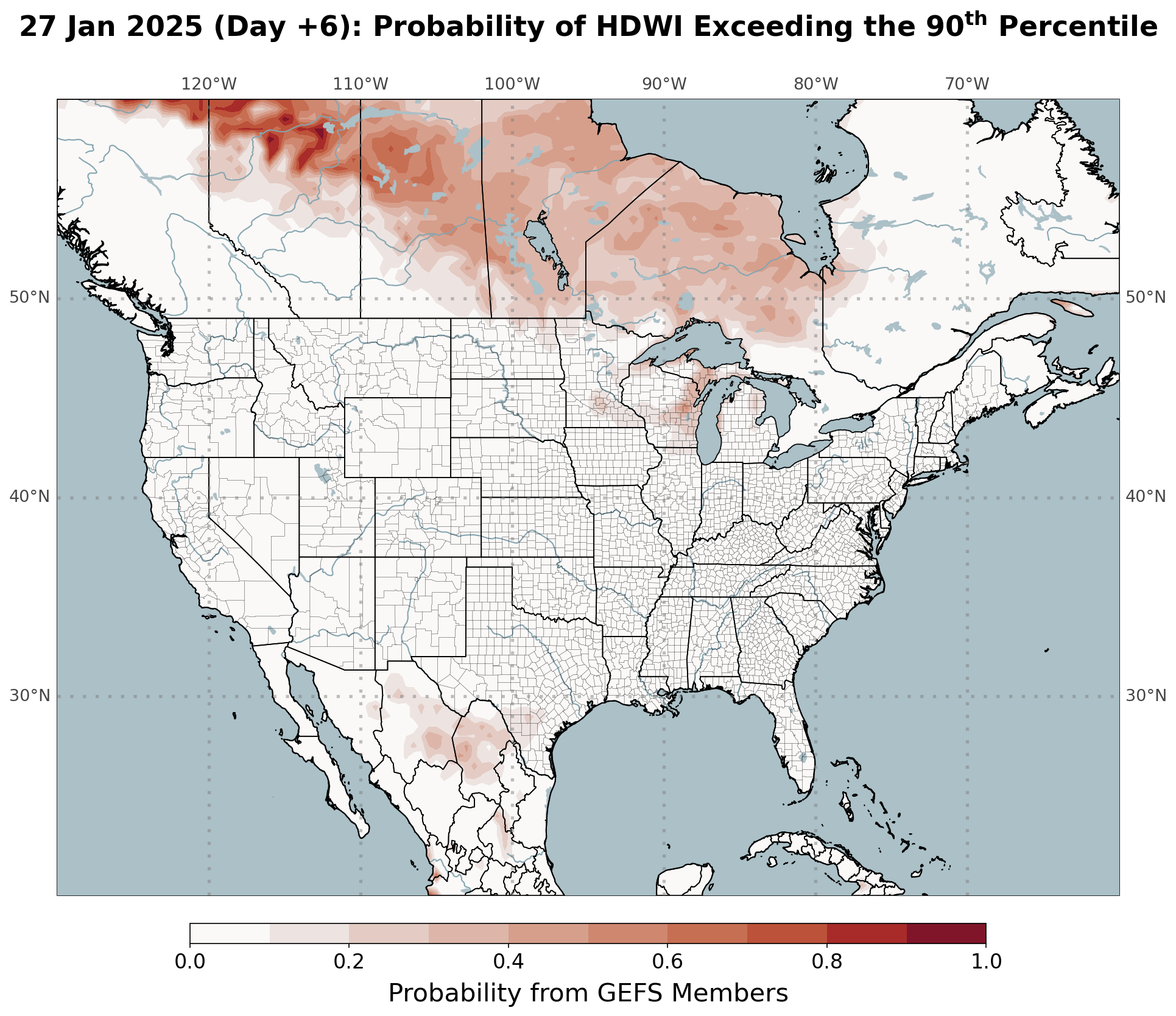 |
| Day 0 - 95th %tile |
Day 1 - 95th %tile |
Day 2 - 95th %tile |
Day 3 - 95th %tile |
Day 4 - 95th %tile |
Day 5 - 95th %tile |
Day 6 - 95th %tile |
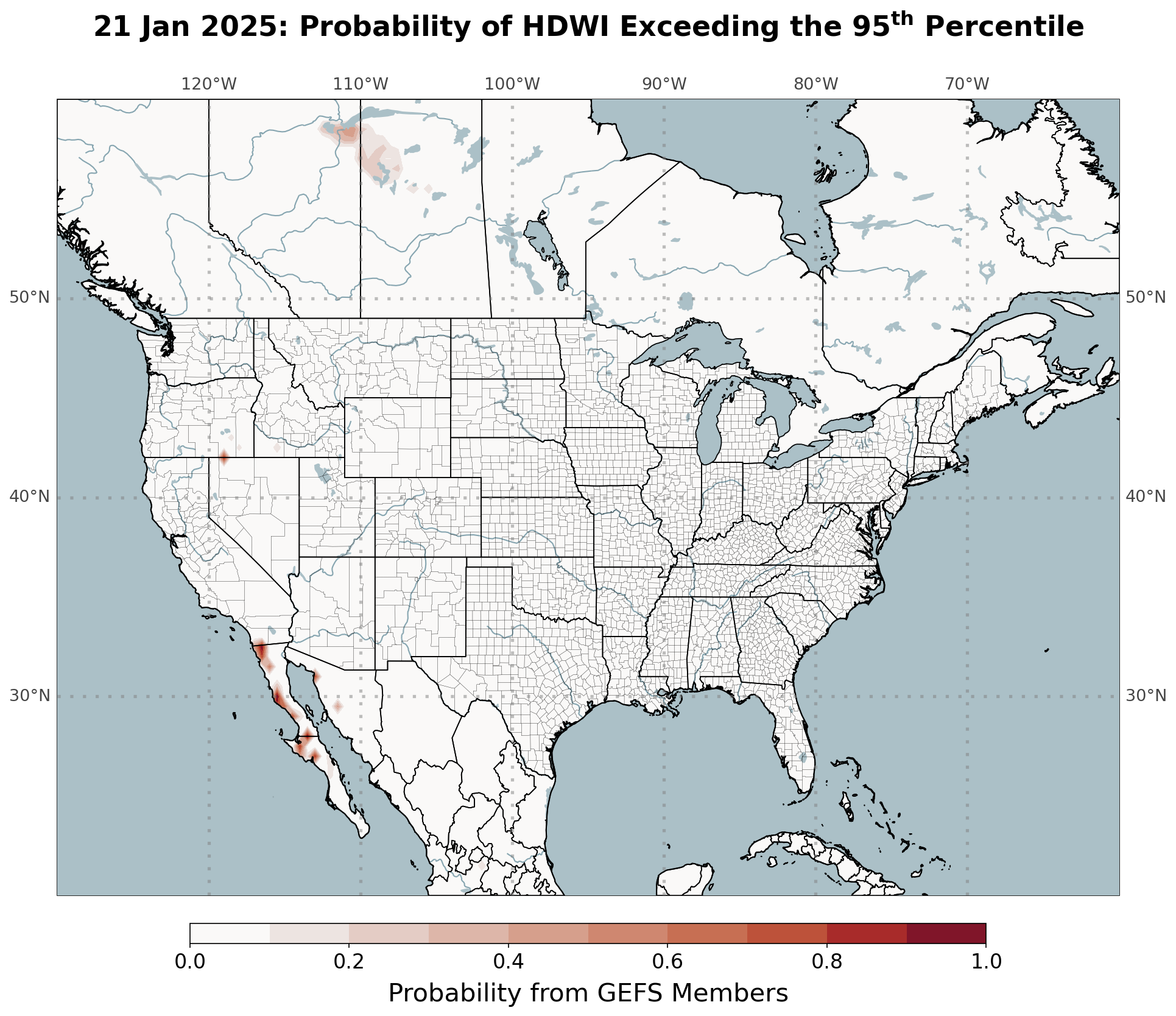 |
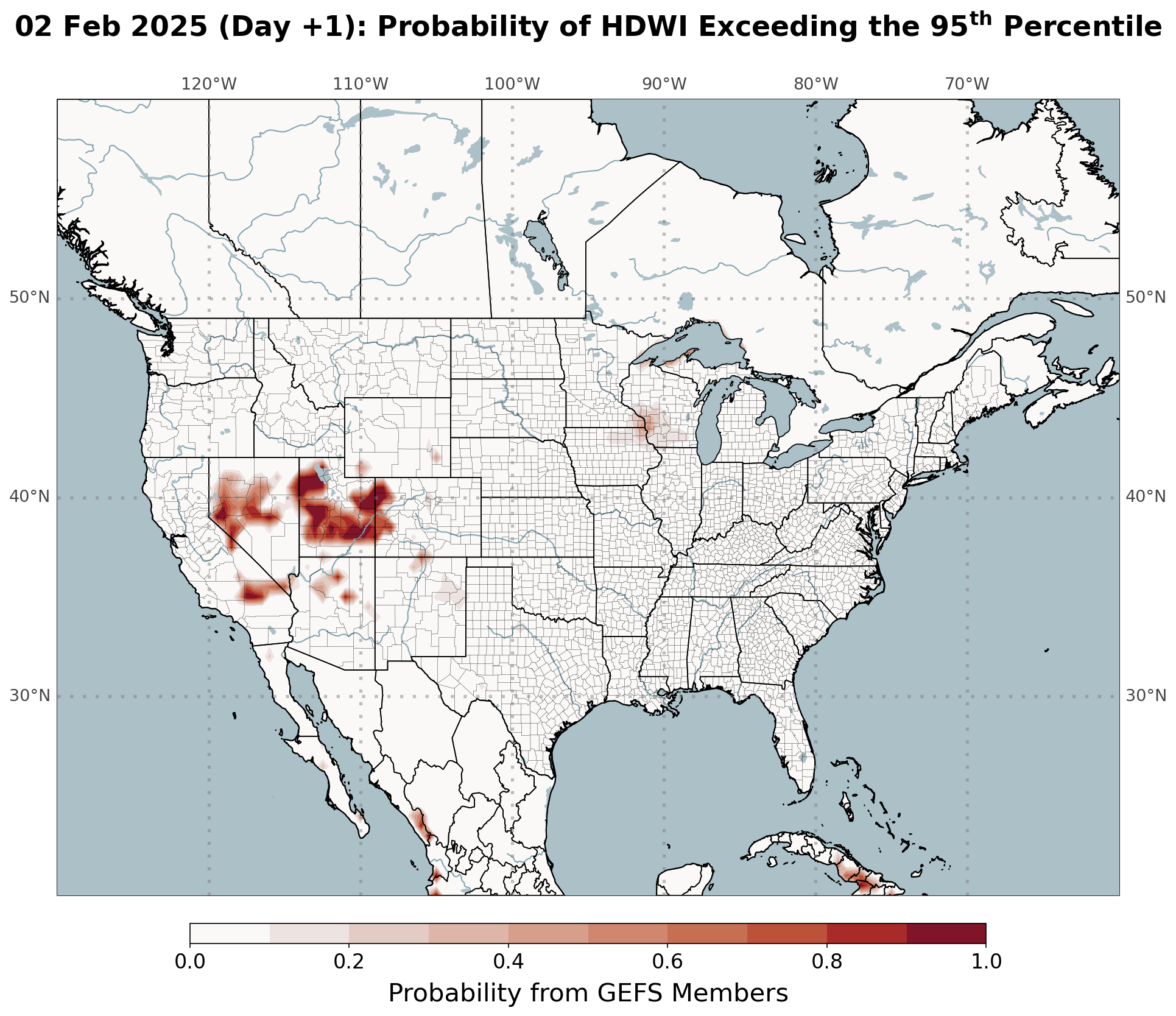 |
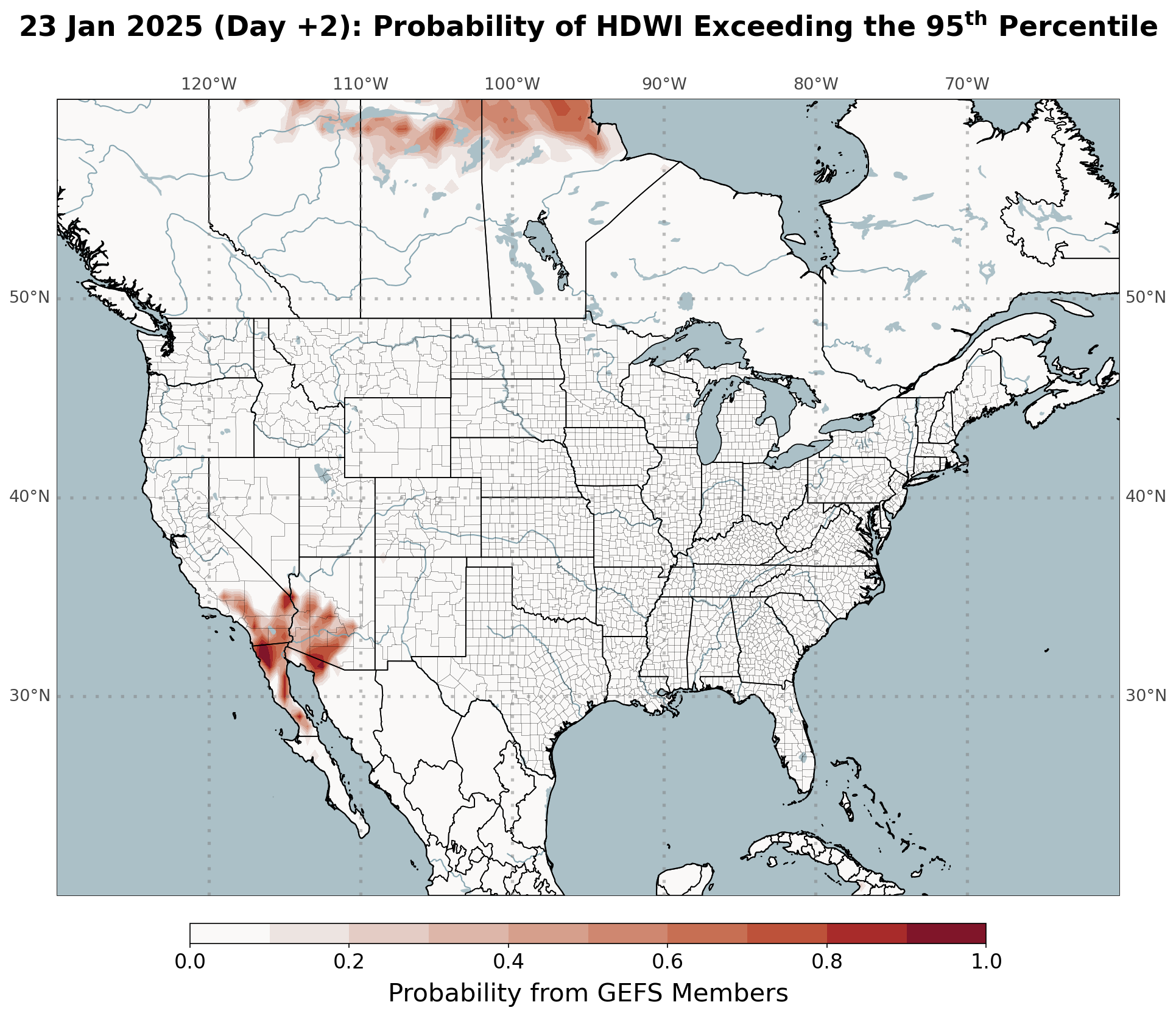 |
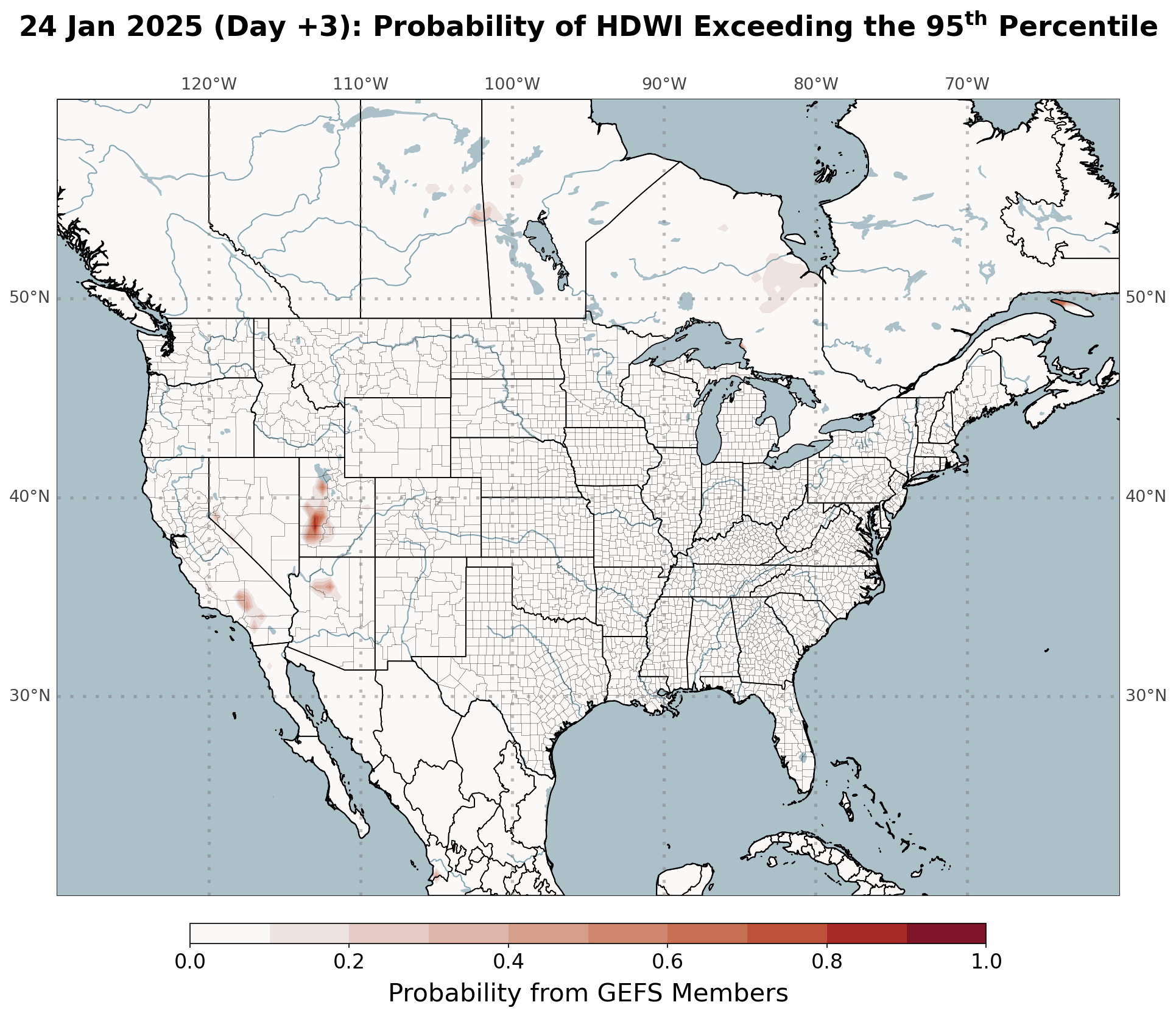 |
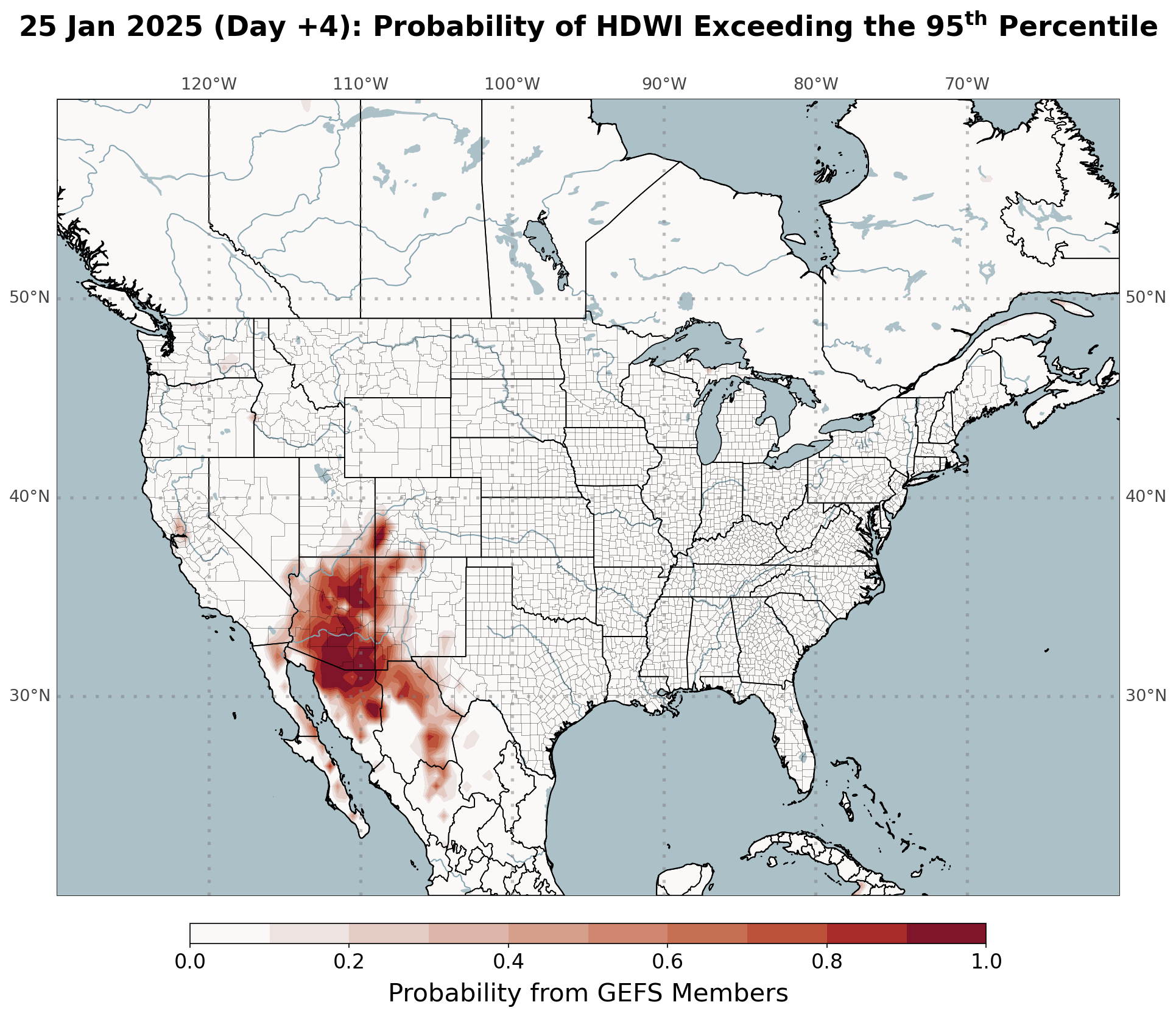 |
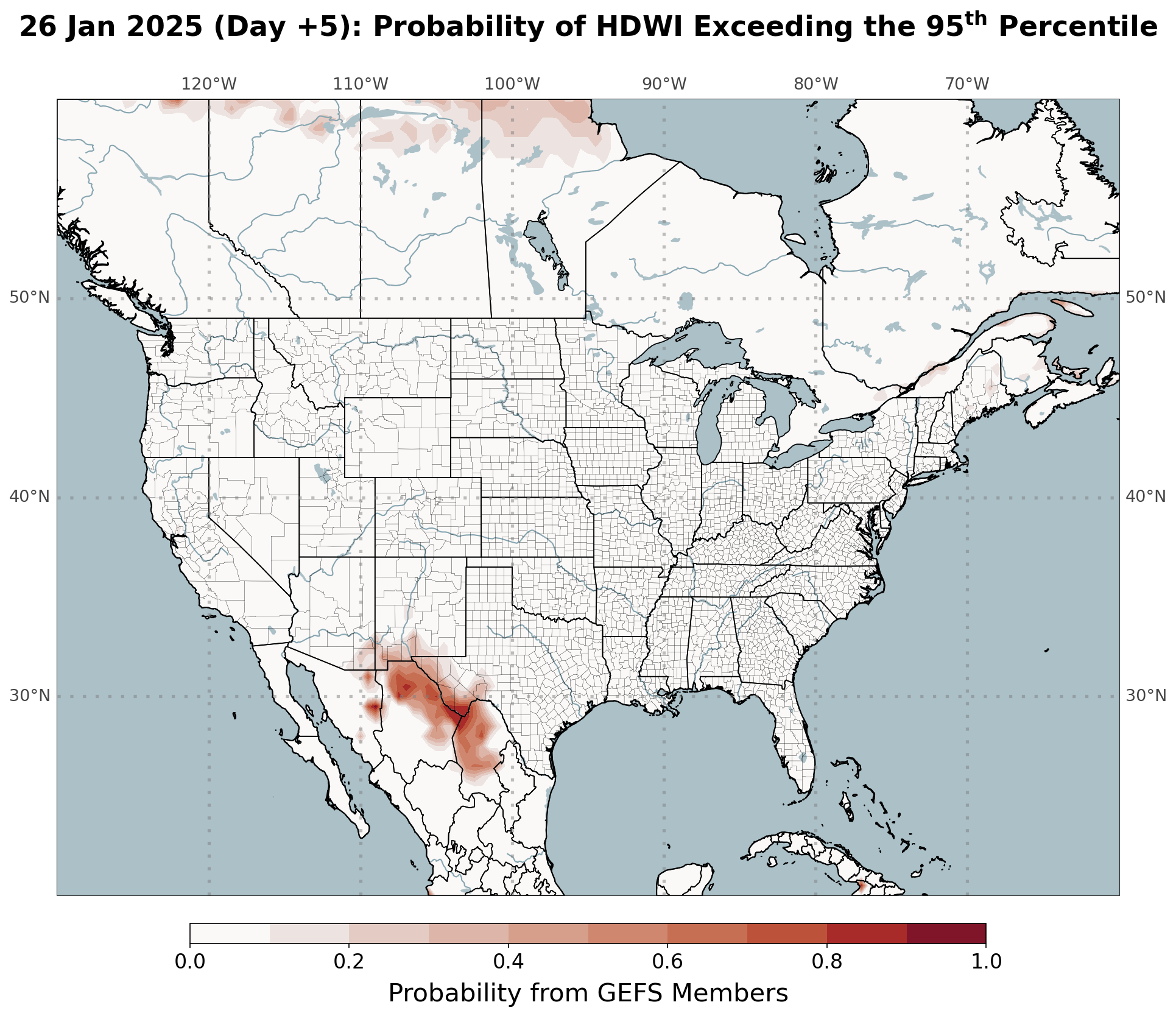 |
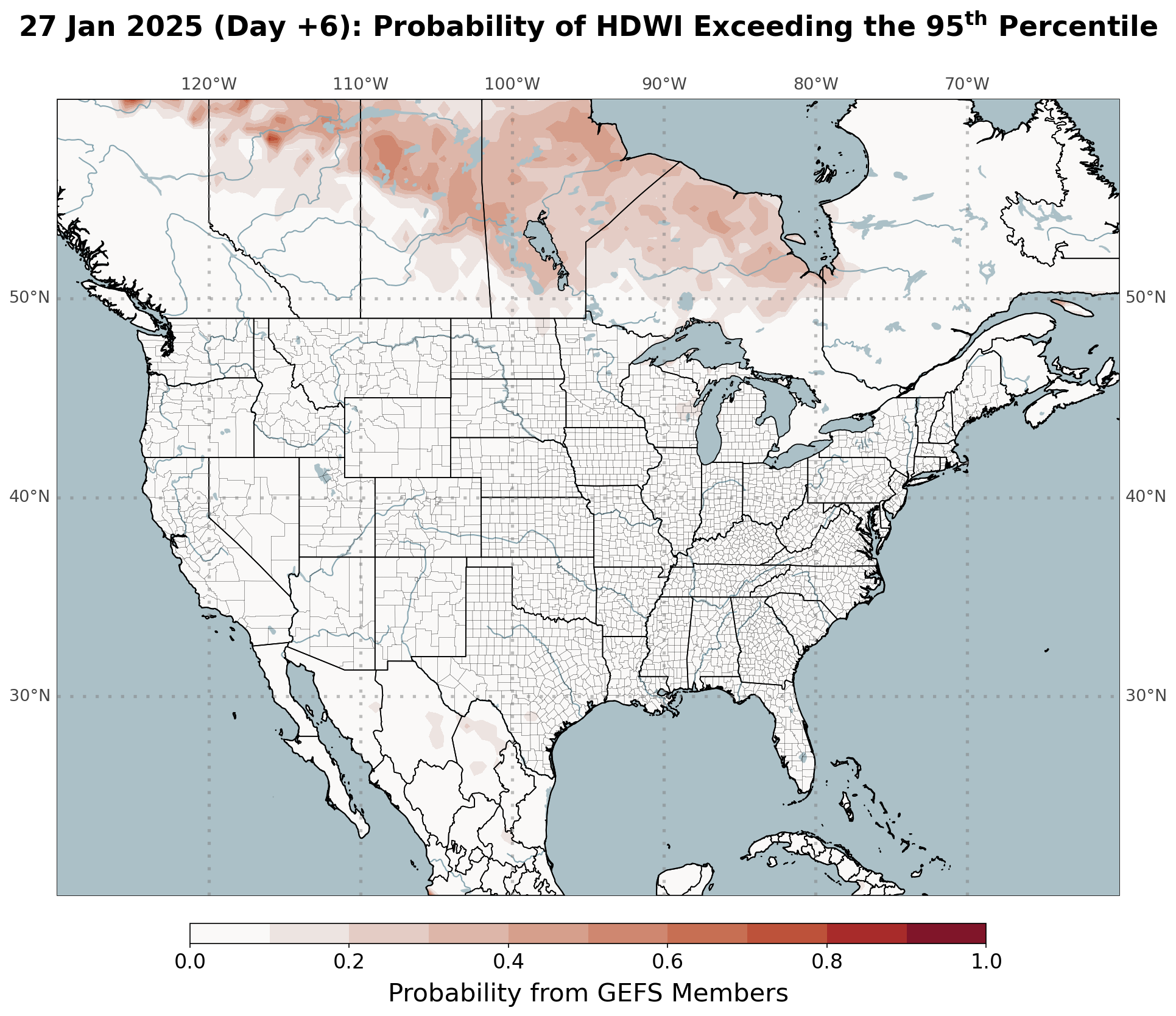 |
| Fire Danger and Fuel Conditions |
|
|
|
| Observed Fire Danger Class |
Forecast Fire Danger Class |
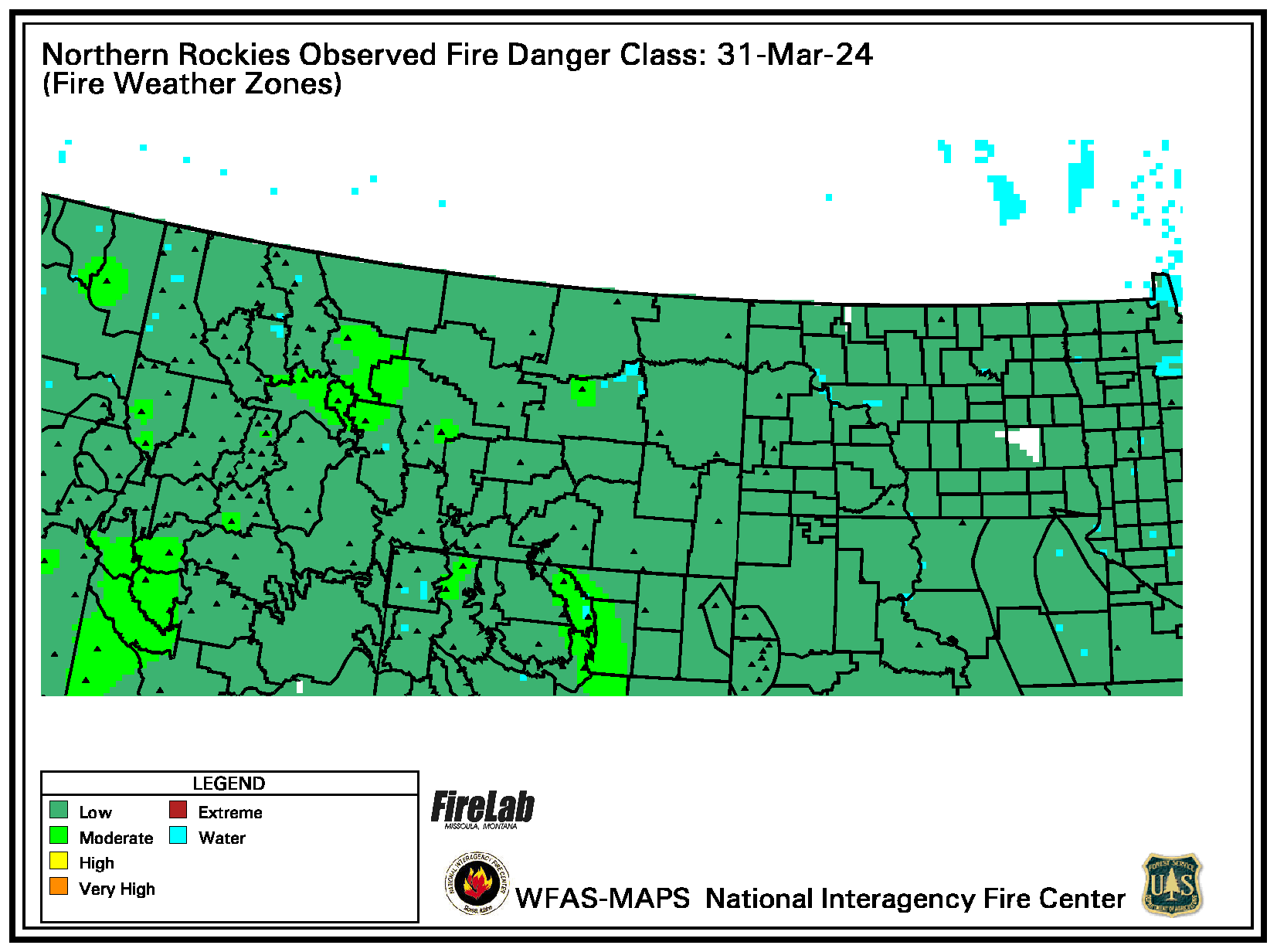 |
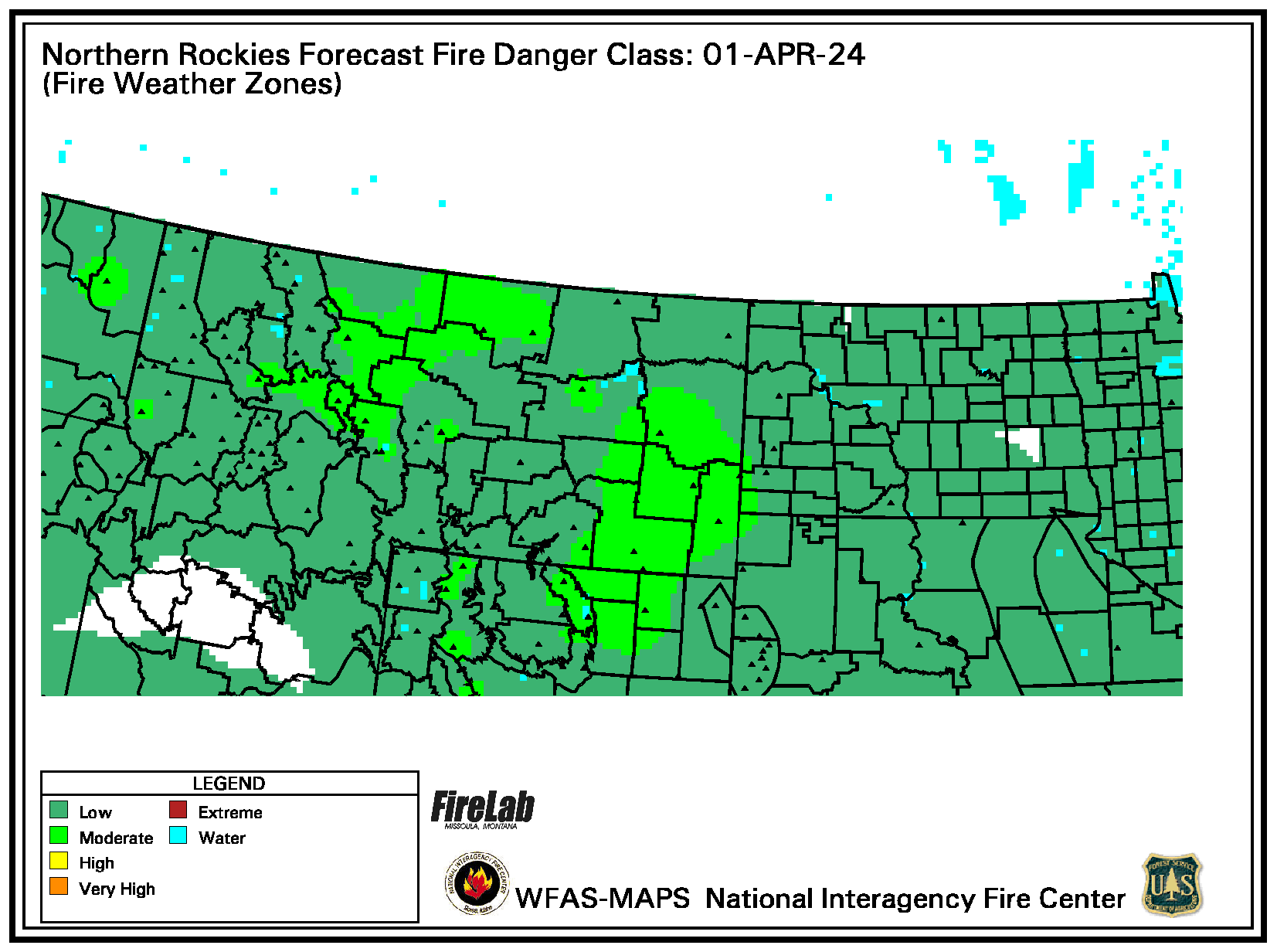 |
| HRB - Live Herbaceous Fuel Moisture |
| Fcst-Day1 |
Fcst-Day2 |
Fcst-Day3 |
Fcst-Day4 |
Fcst-Day5 |
Fcst-Day6 |
Fcst-Day7 |
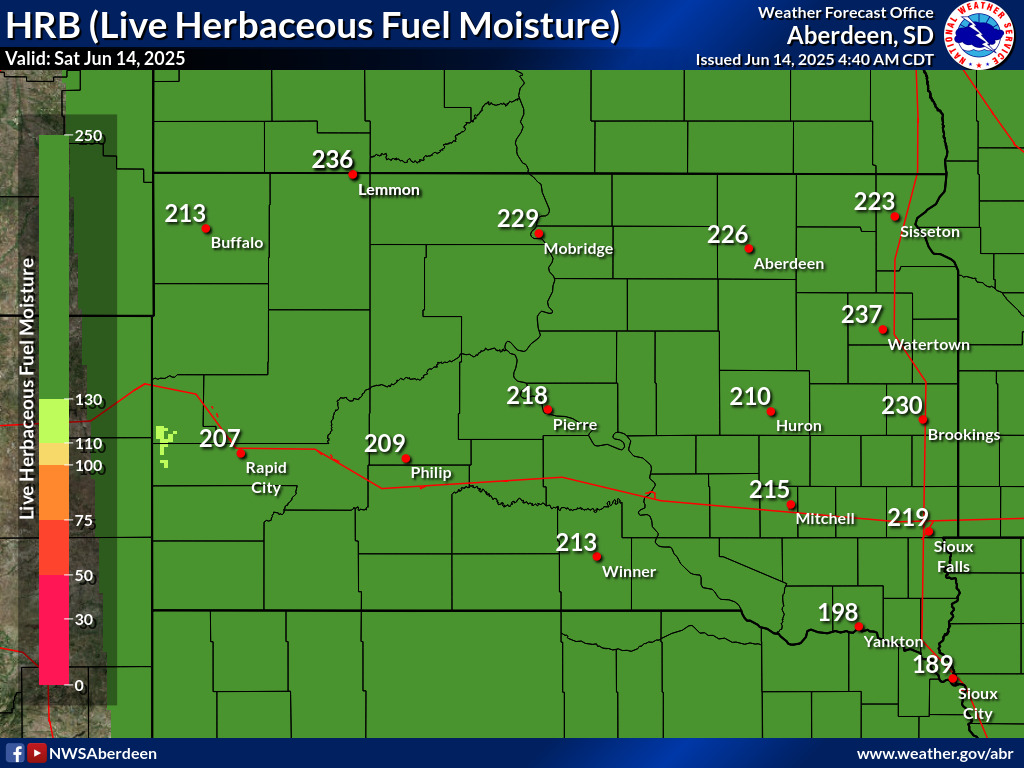 |
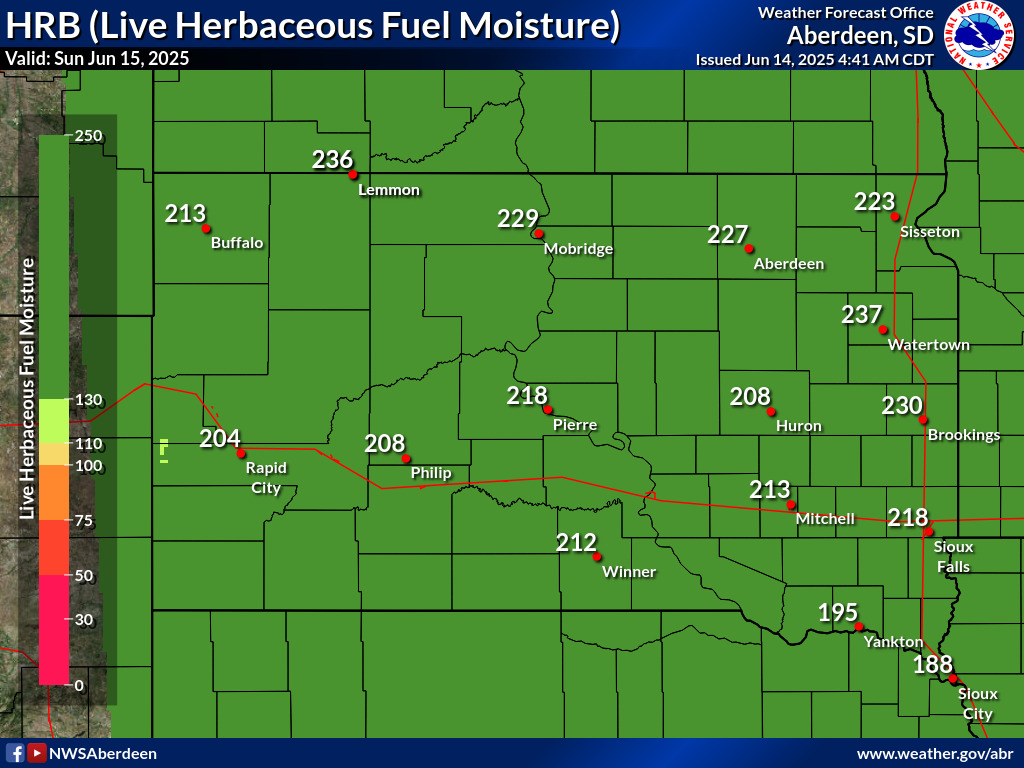 |
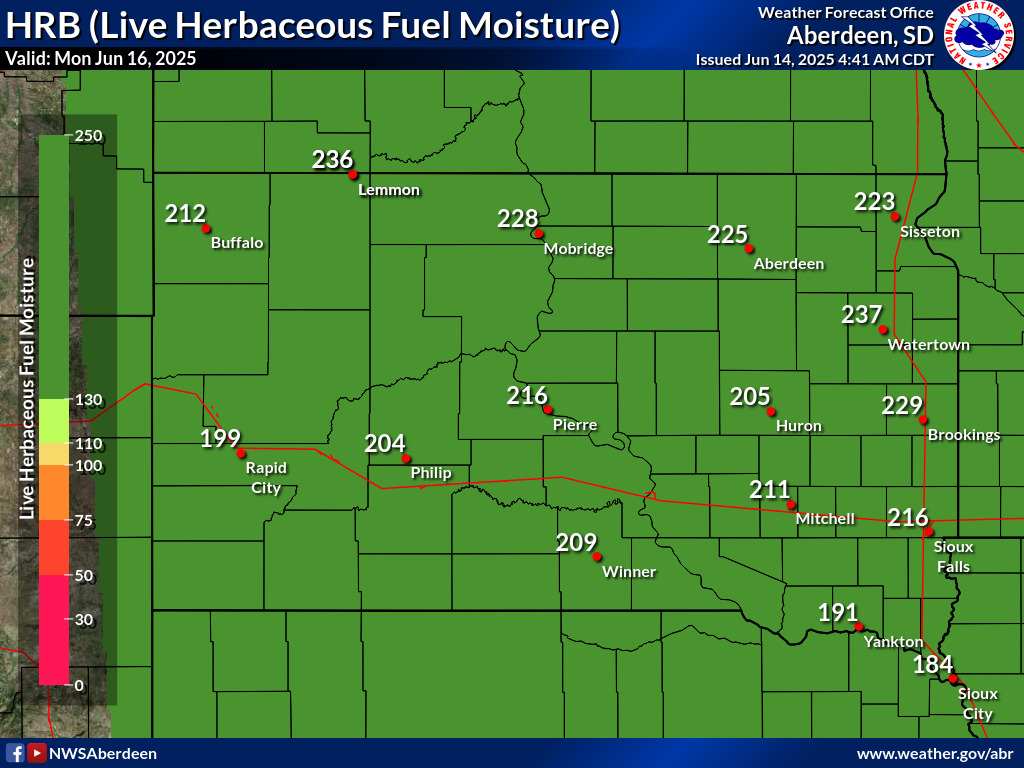 |
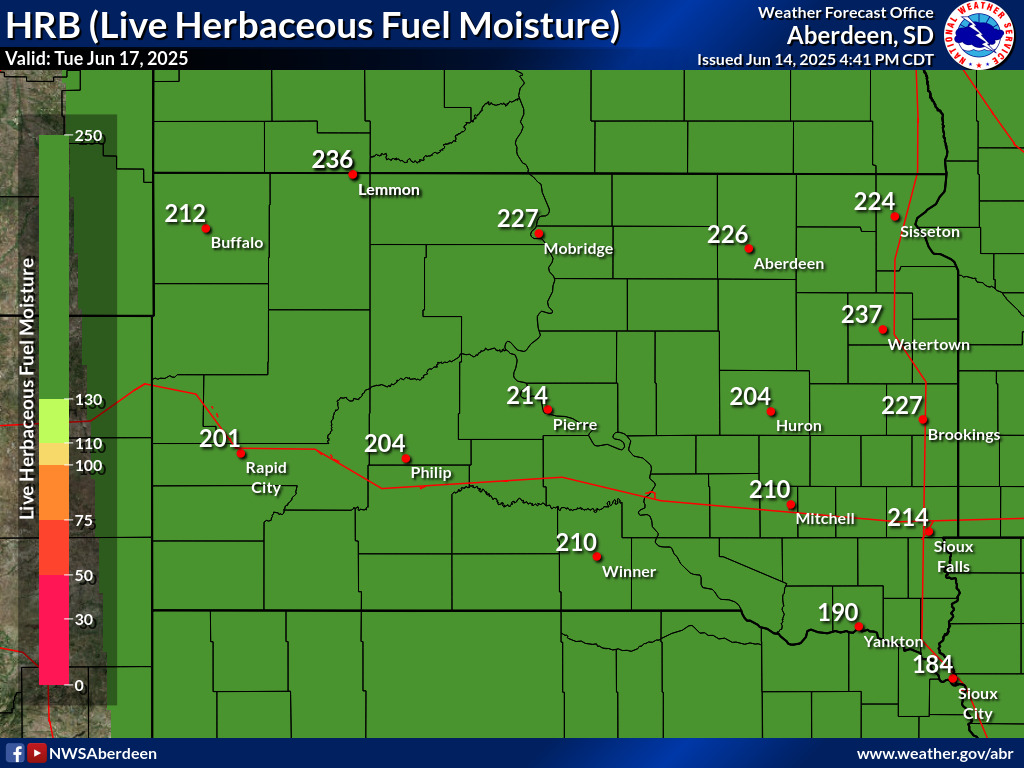 |
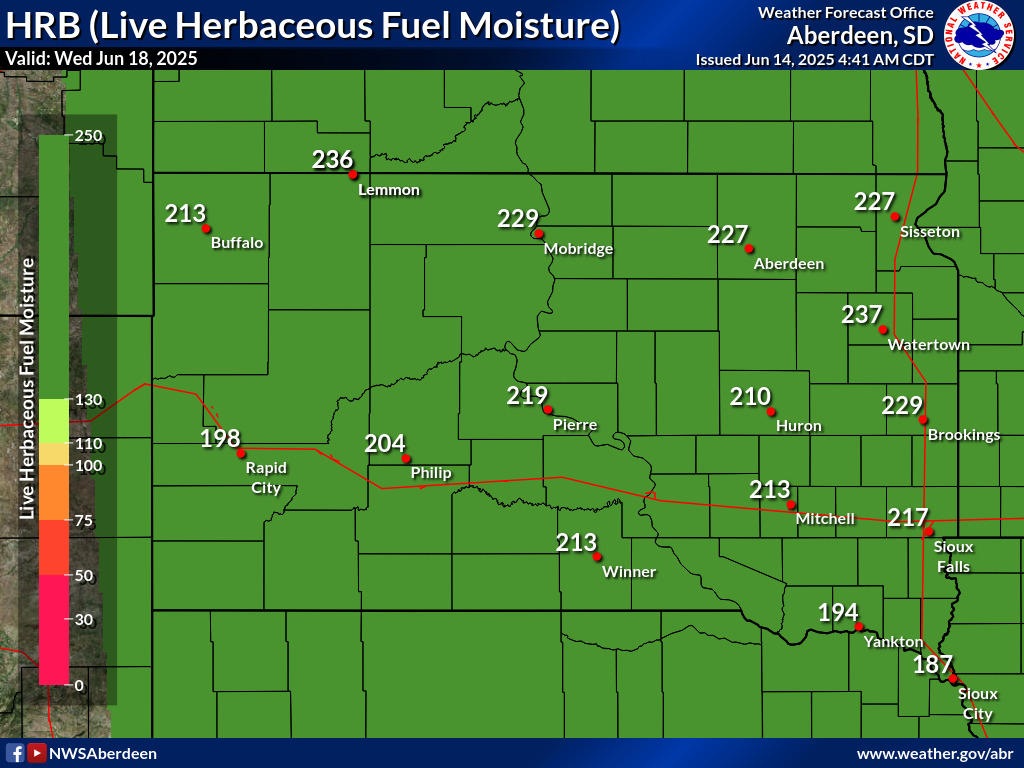 |
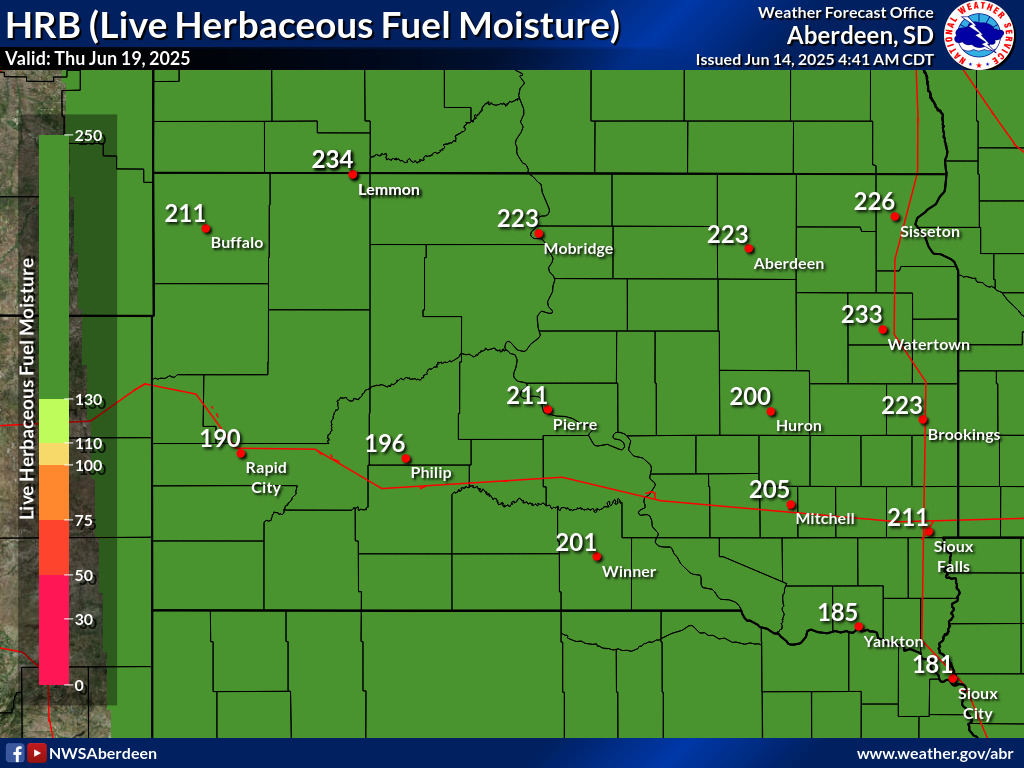 |
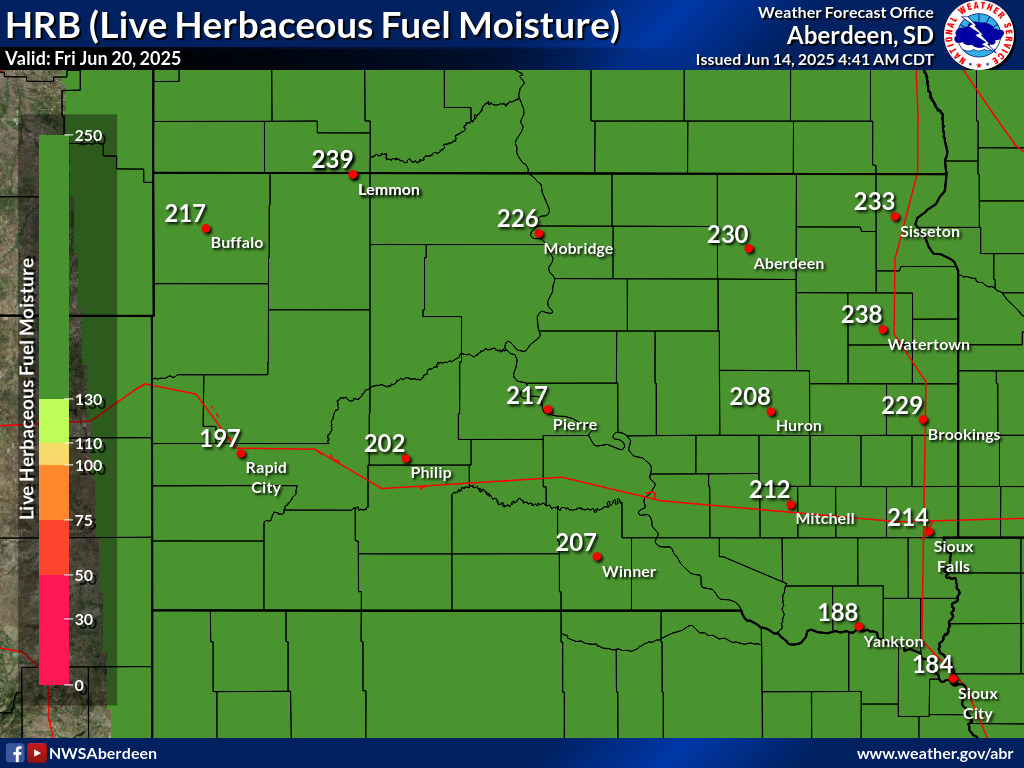 |
| Obs: -10 Days |
Obs: -9 Days |
Obs: -8 Days |
Obs: -7 Days |
Obs: -6 Days |
Obs: -5 Days |
Obs: -4 Days |
Obs: -3 Days |
Obs: -2 Days |
Obs: -1 Days |
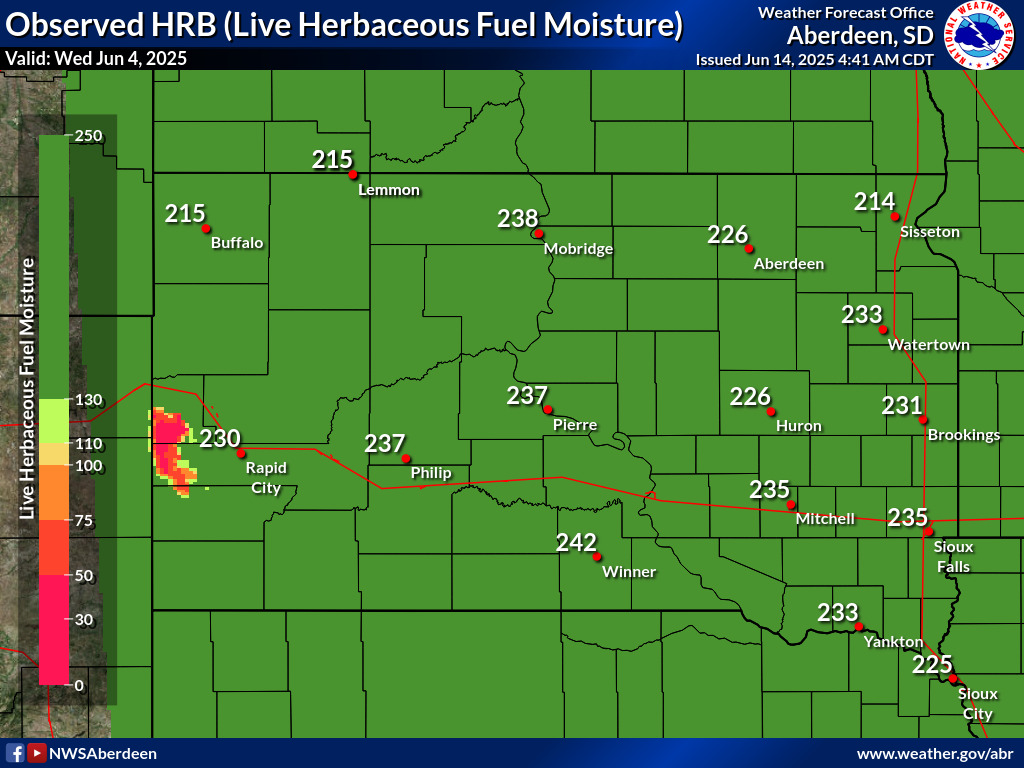 |
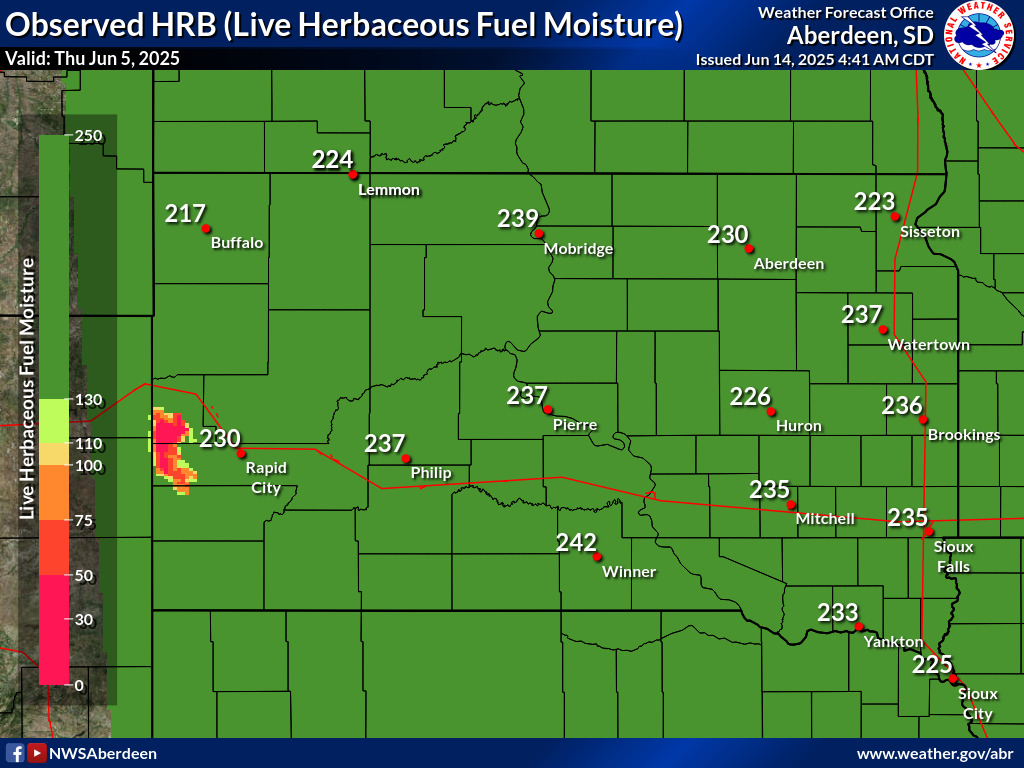 |
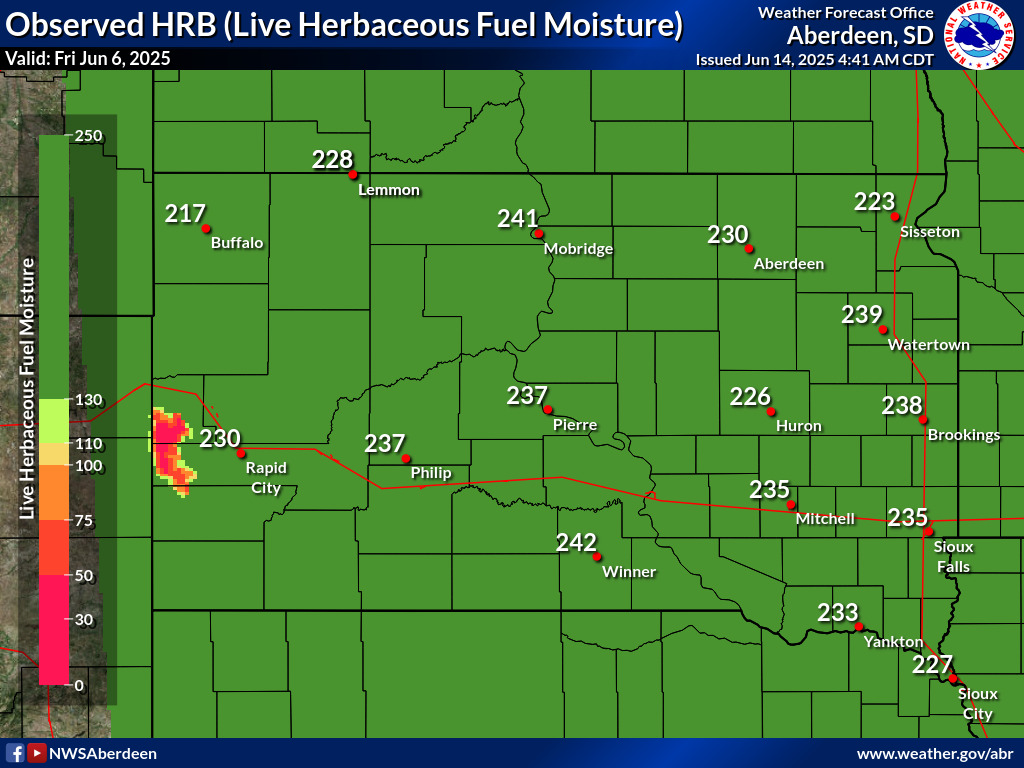 |
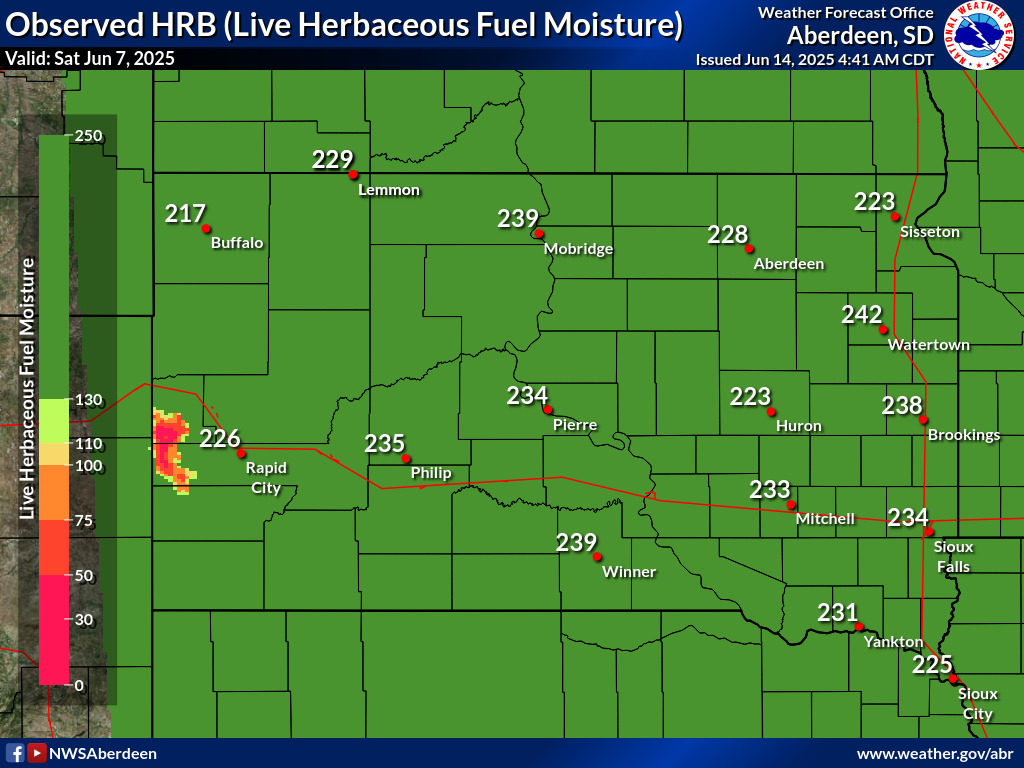 |
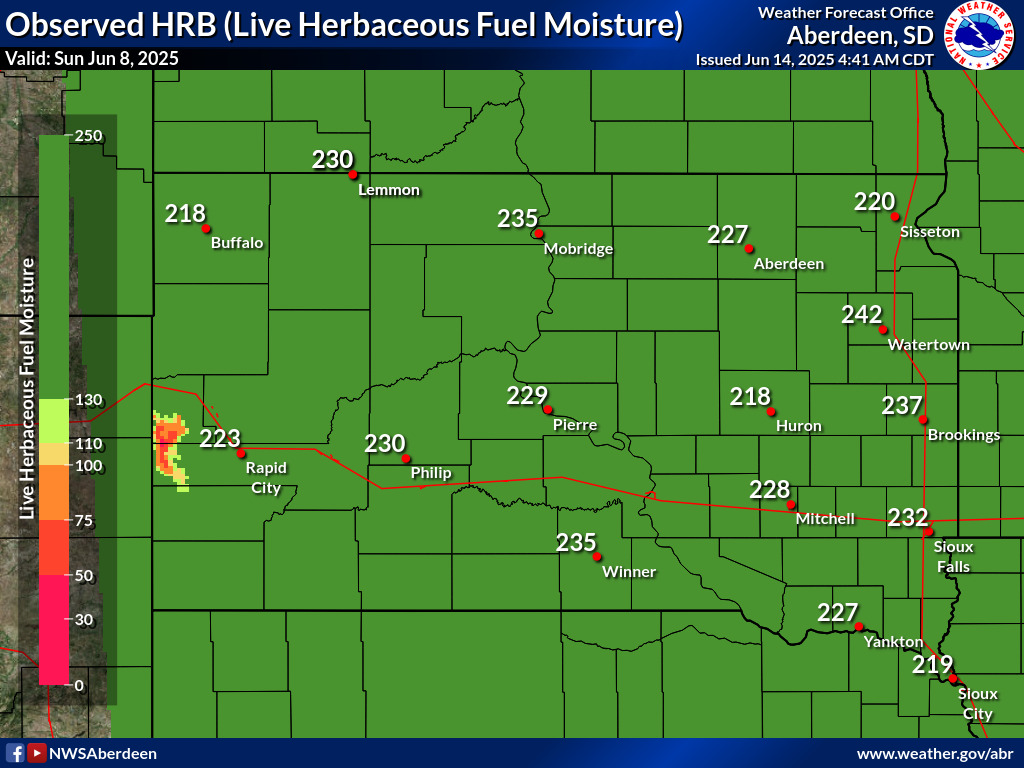 |
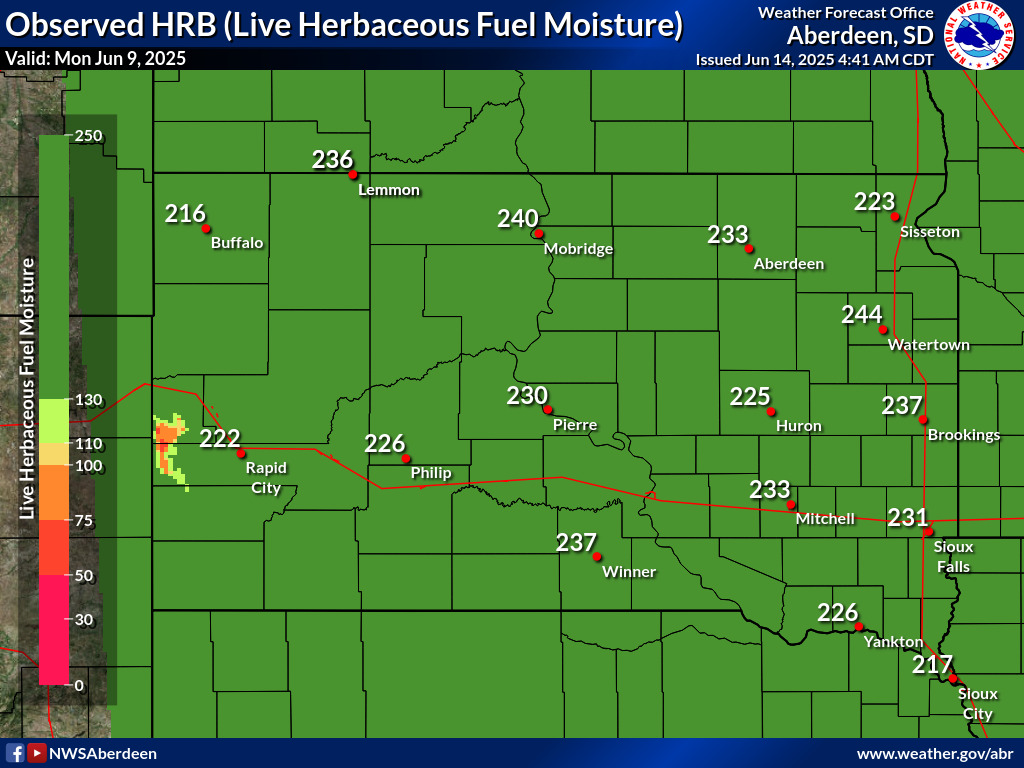 |
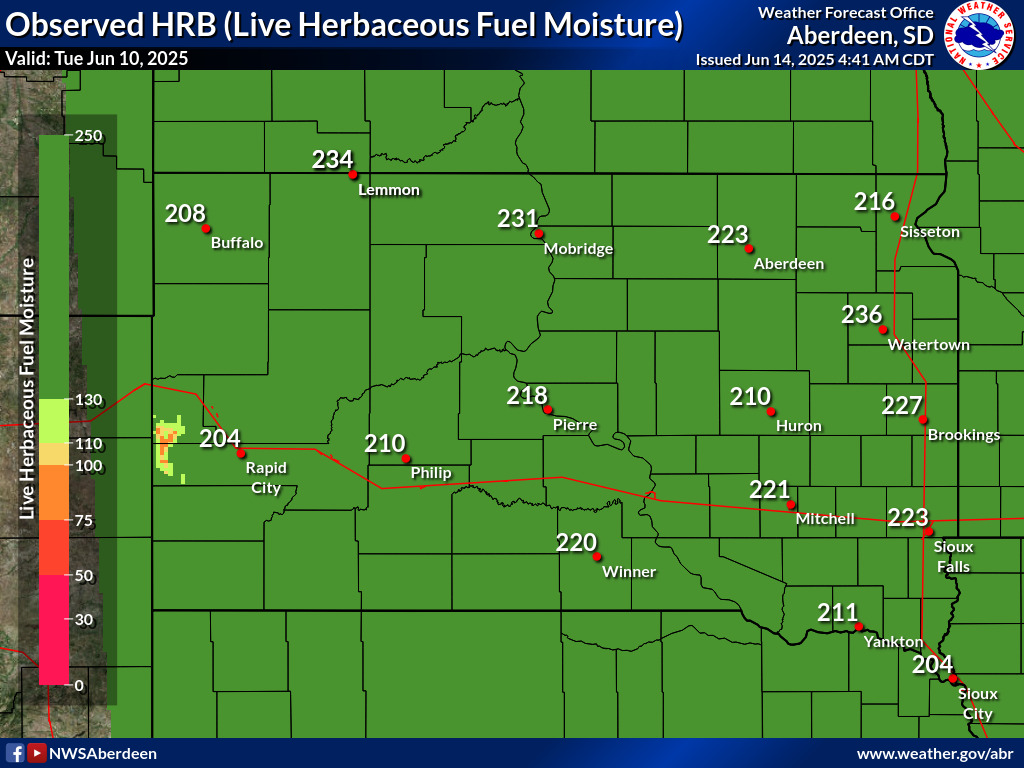 |
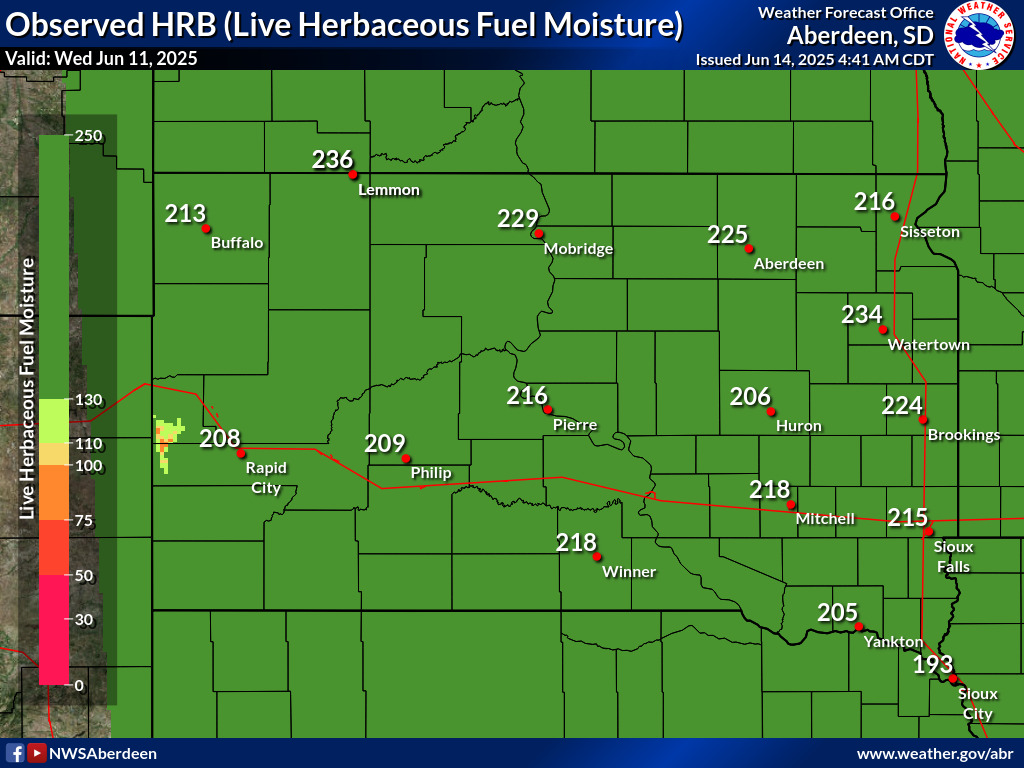 |
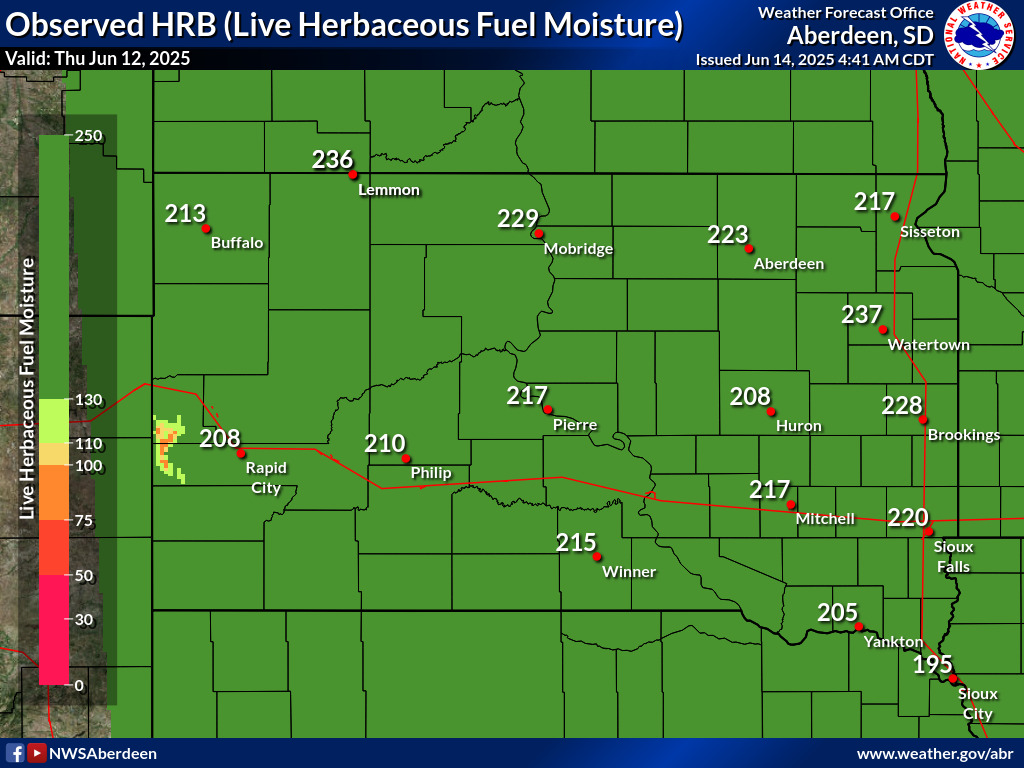 |
 |
HRB Values >120% generally make it easier for fires to be contained.
- HRB = >30% to 50%: Mostly to completely cured, treat as dead fuels.
- HRB = >50% to 80%: Significant yellowing and curing. Live fuels contributing to spread.
- HRB = >80% to 100%: Green color pales. Grasses become less resistant to spread.
- HRB = >100% to 120%: Mature foliage, new growth complete, and comparable to older perennial foliage. Flammable shrubs should burn. Grasses resist spread.
- HRB = >120% to 150%: Mature foliage, new growth complete, and comparable to older perennial foliage. Shrubs and grasses resist spread.
- HRB = >150% to 300%: Maturing foliage still developing. Fresh foliage fully expanded, vigorously growing. Early in growing cycle.
Source
|
| Point Based Fuel Moisture |
|
· Burning Index: Describes the potential amount of effort needed to contain a single fire in a particular fuel type within a rating area. Based on a combination of the Spread and Energy Release Component.
· Spread Component: Rating of the forward rate of spread of a headfire (feet/min).
· Ignition Component: A number which relates the probability that a fire will result if a firebrand is introduced into a fine fuel complex. The ignition component can range from 0 when conditions are cool and damp, to 100 on days when the weather is dry and windy. Theoretically, on a day when the ignition component registers a 60 approximately 60% of all fire brands that come into contact with wildland fuels will require suppression action.
· Energy Release Component: A number related to the available energy (BTU) per unit area (square foot) within the flaming front at the head of a fire. Daily variations in ERC are due to changes in moisture content of the various fuels present, both live and dead. Since this number represents the potential “heat release per unit area “in the flaming zone, it can provide guidance to several important fire activities. It may also be considered a composite fuel moisture value as it reflects the contribution that all live and dead fuels have to potential fire intensity
|
| 10 Hr. Fuel Moisture |
100 Hr. Fuel Moisture |
1000 Hr. Fuel Moisture |
KBDI |
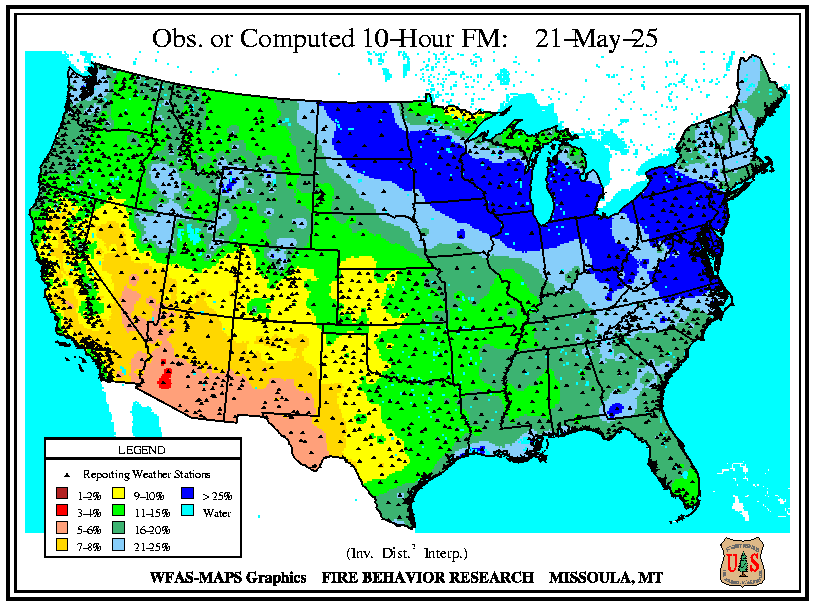 |
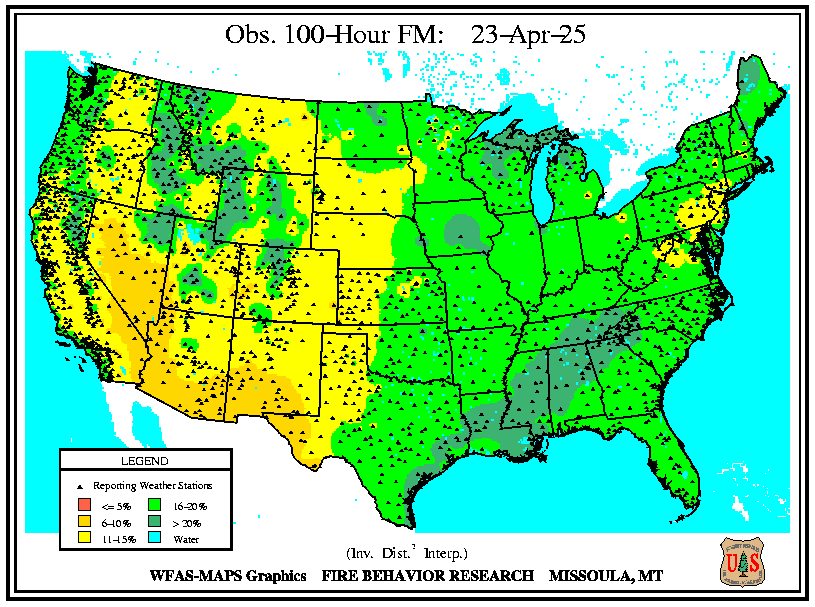 |
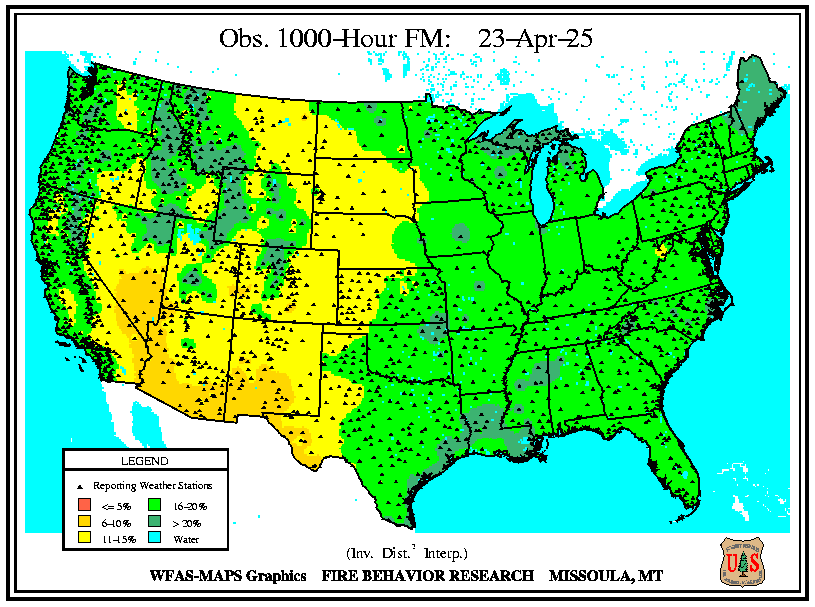 |
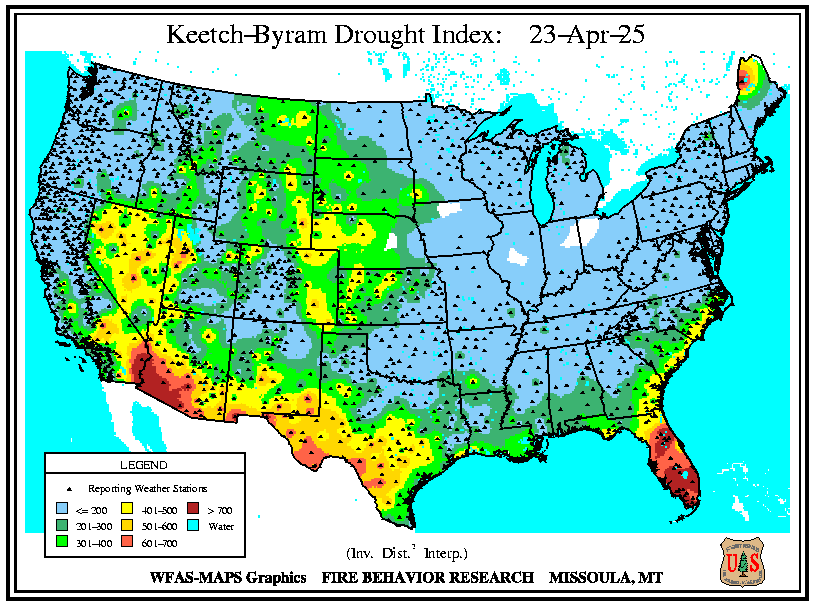 |
- KBDI = 0 - 200: Soil moisture and large class fuel moistures are high and do not contribute much to fire intensity. Typical of spring dormant season following winter precipitation.
- KBDI = 200 - 400: Typical of late spring, early growing season. Lower litter and duff layers are drying and beginning to contribute to fire intensity.
- KBDI = 400 - 600: Typical of late summer, early fall. Lower litter and duff layers actively contribute to fire intensity and will burn actively.
- KBDI = 600 - 800: Often associated with more severe drought with increased wildfire occurrence. Intense, deep burning fires with significant downwind spotting can be expected. Live fuels can also be expected to burn actively at these levels.
|
| Haines Index |
Lightning Ignition Efficiency |
Potential Lightning Ignitions |
Dry Lightning and Rain |
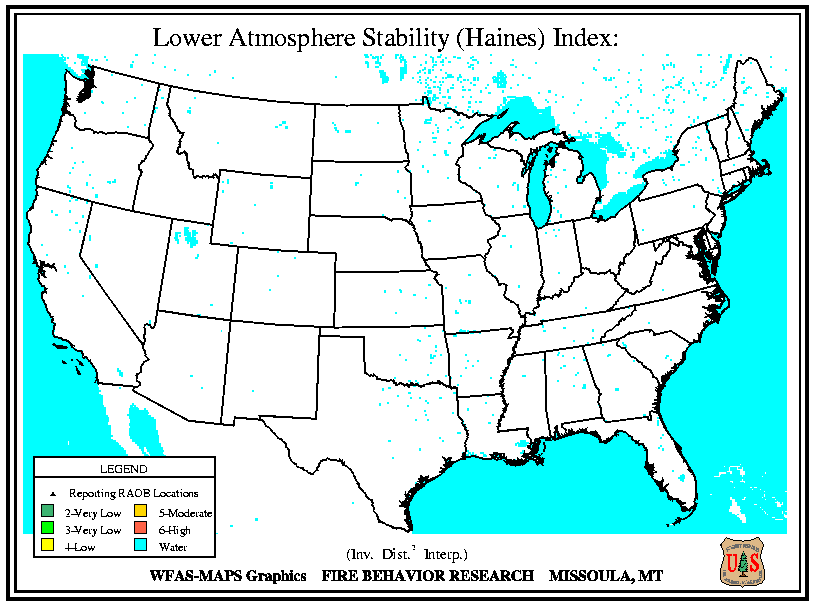 |
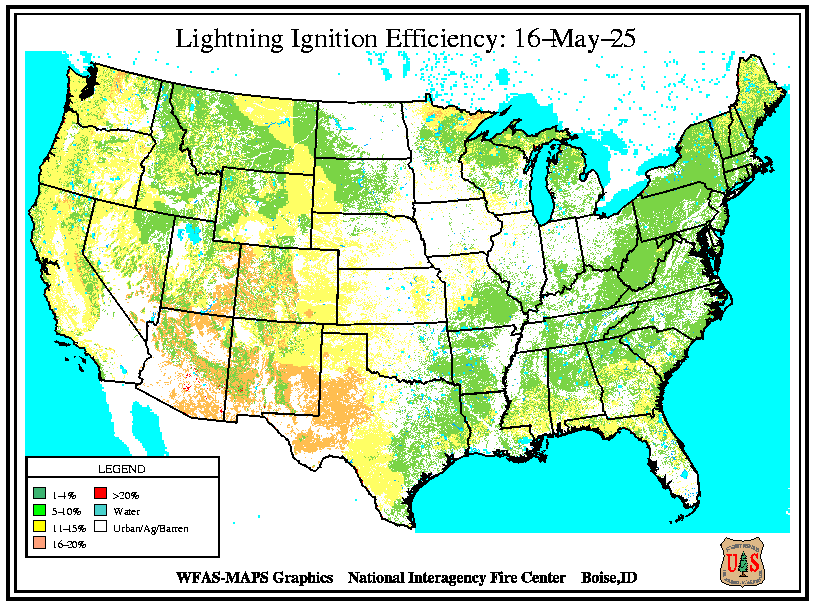 |
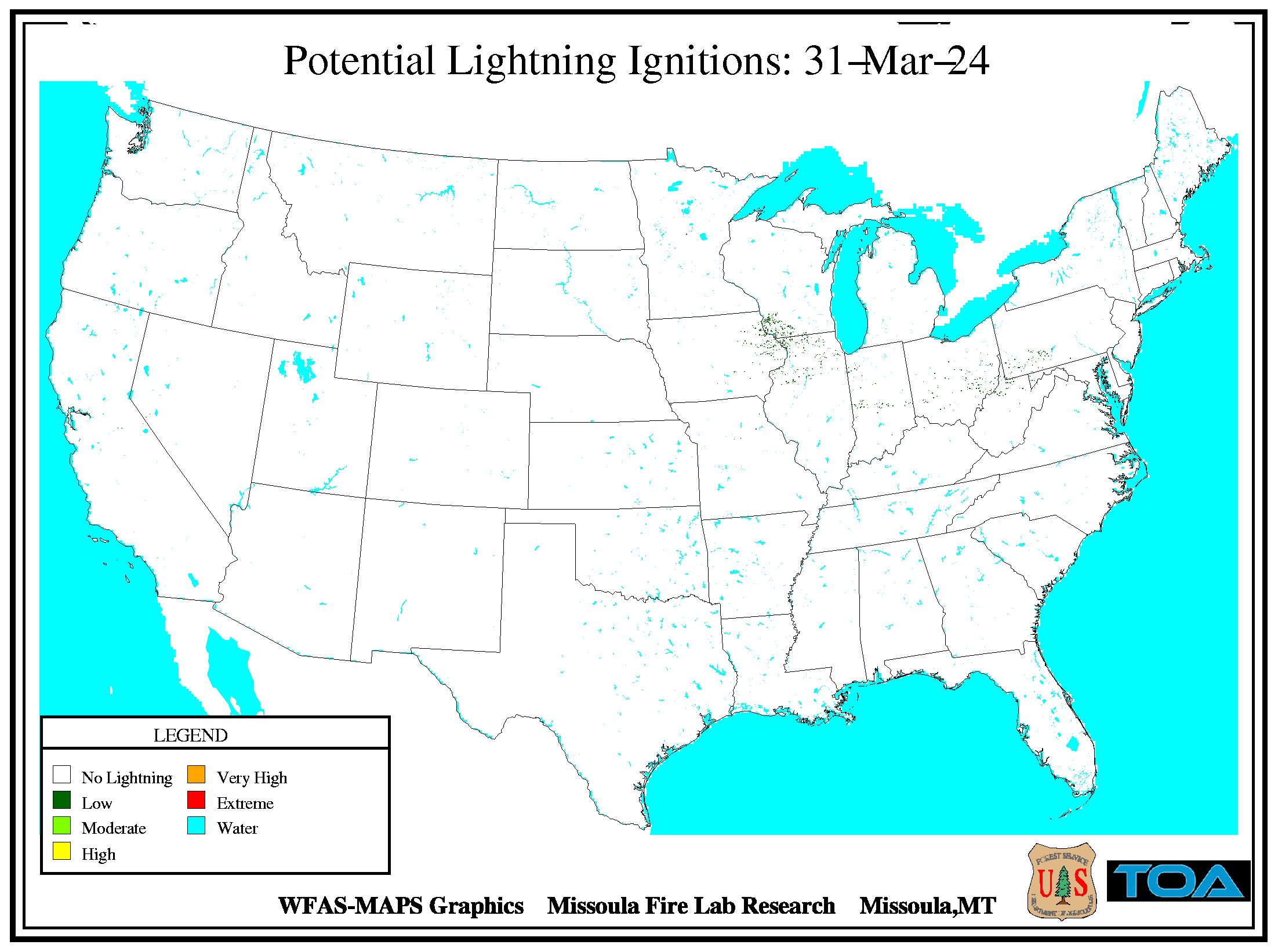 |
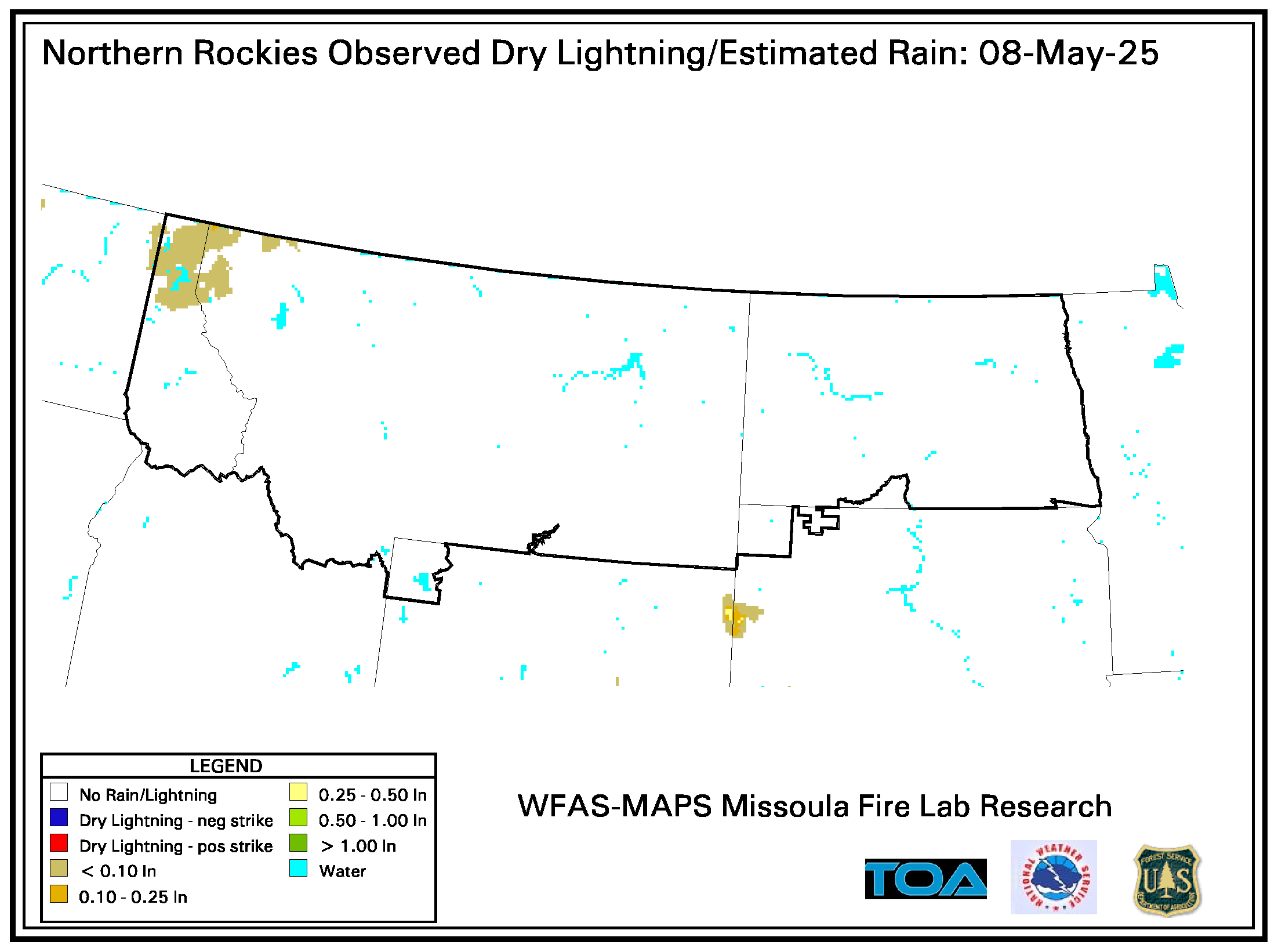 |
|
It is used to indicate the potential for wildfire growth by measuring the stability and dryness of the air over a fire. It is calculated by combining the stability and moisture content of the lower atmosphere into a number that correlates well with large fire growth. The stability term is determined by the temperature difference between two atmospheric layers; the moisture term is determined by the temperature and dew point difference. This index has been shown to be correlated with large fire growth on initiating and existing fires where surface winds do not dominate fire behavior. Haines Index is computed from the morning (12Z) soundings from RAOB stations across North America.
- 2 : Very Low Potential -- (Moist Stable Lower Atmosphere)
- 3 : Very Low Potential
- 4 : Low Potential
- 5 : Moderate Potential
- 6 : High Potential ------ (Dry Unstable Lower Atmosphere)
|
Lightning fires are started by strikes to ground that have a component called a continuing current. All positive discharges have a continuing current, and about 20% of negative discharges have one. Ignition depends on the duration of the current and the kind of fuel the lightning hits. Ignition in fuels with long and medium length needle cast, such as Ponderosa pine and Lodgepole pine, depend on the fuel moisture. Ignitions in short- needled species, such as Douglas fir depend far more on the depth of the duff layer than on the moisture. Spread of the fire after ignition usually depends on fuel moisture in all cases.
The ignition efficiency on a 1 km pixel is given on a per discharge basis. That is, if the efficiency is high, then about 9 discharges will result in one ignition; if the efficiency is extreme, about 5 or fewer discharges will result in an ignition. The ratio of positive and negative discharges is built into the calculation.
|
| Burning Index |
Ignition Component |
Energy Release Component |
Spread Component |
 |
 |
 |
 |
| Precipitation |
Cloud Cover |
Humidity |
Temperature |
Wind Speed |
 |
 |
 |
 |
 |
|








































































